Contemporary interior design continues evolving in 2025, embracing both minimalist serenity and bold maximalist statements. Today's design trends focus on wellness, sustainability, and personalized spaces that reflect individual lifestyles rather than following fleeting trends. From the calming fusion of Japandi aesthetics to the raw honesty of brutalist elements, contemporary styles celebrate natural materials, innovative technology integration, and multifunctional living. These design approaches prioritize craftsmanship, timeless appeal, and environmental consciousness while creating spaces that support both physical and mental wellbeing. Whether you're drawn to curved furniture's organic flow or textured walls' tactile appeal, contemporary interior design offers endless possibilities for creating sophisticated, functional homes that stand the test of time.
1. Japandi Contemporary Interior Design Style
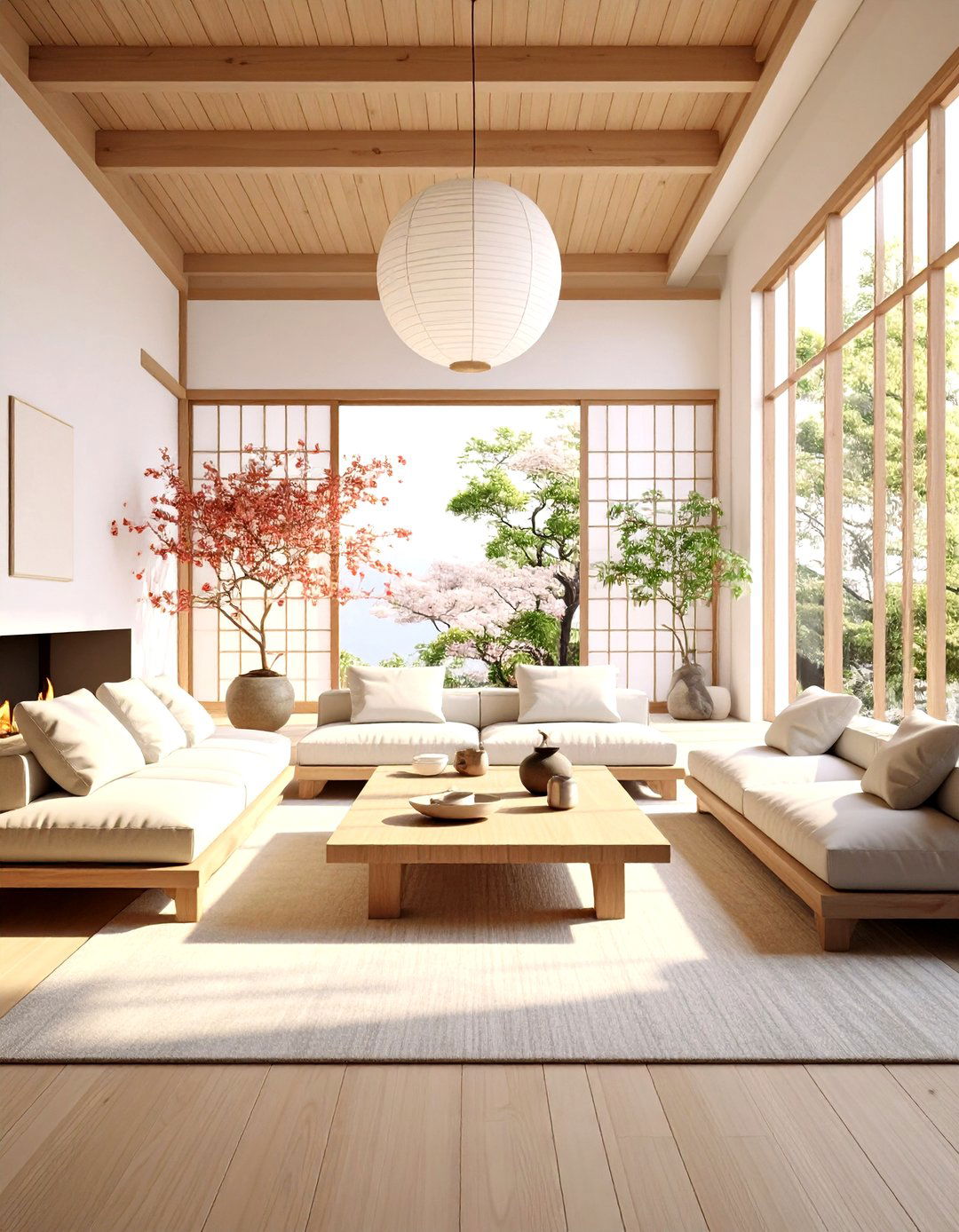
A harmonious marriage between Japanese minimalism and Scandinavian simplicity, Japandi contemporary interior design creates spaces that embody tranquility and functional beauty. This style embraces clean lines, neutral color palettes dominated by whites, grays, and warm beiges, while incorporating natural materials like wood, bamboo, and stone. The philosophy centers on wabi-sabi, finding beauty in imperfection, combined with hygge's cozy warmth to create inviting yet uncluttered environments. Essential elements include low-profile furniture, organic textures, and strategically placed plants that bring life to minimalist spaces. Rather than stark minimalism, Japandi contemporary interior design emphasizes mindful curation, where every piece serves both aesthetic and functional purposes while promoting a sense of calm and connection to nature.
2. Minimalist Contemporary Interior Design Style
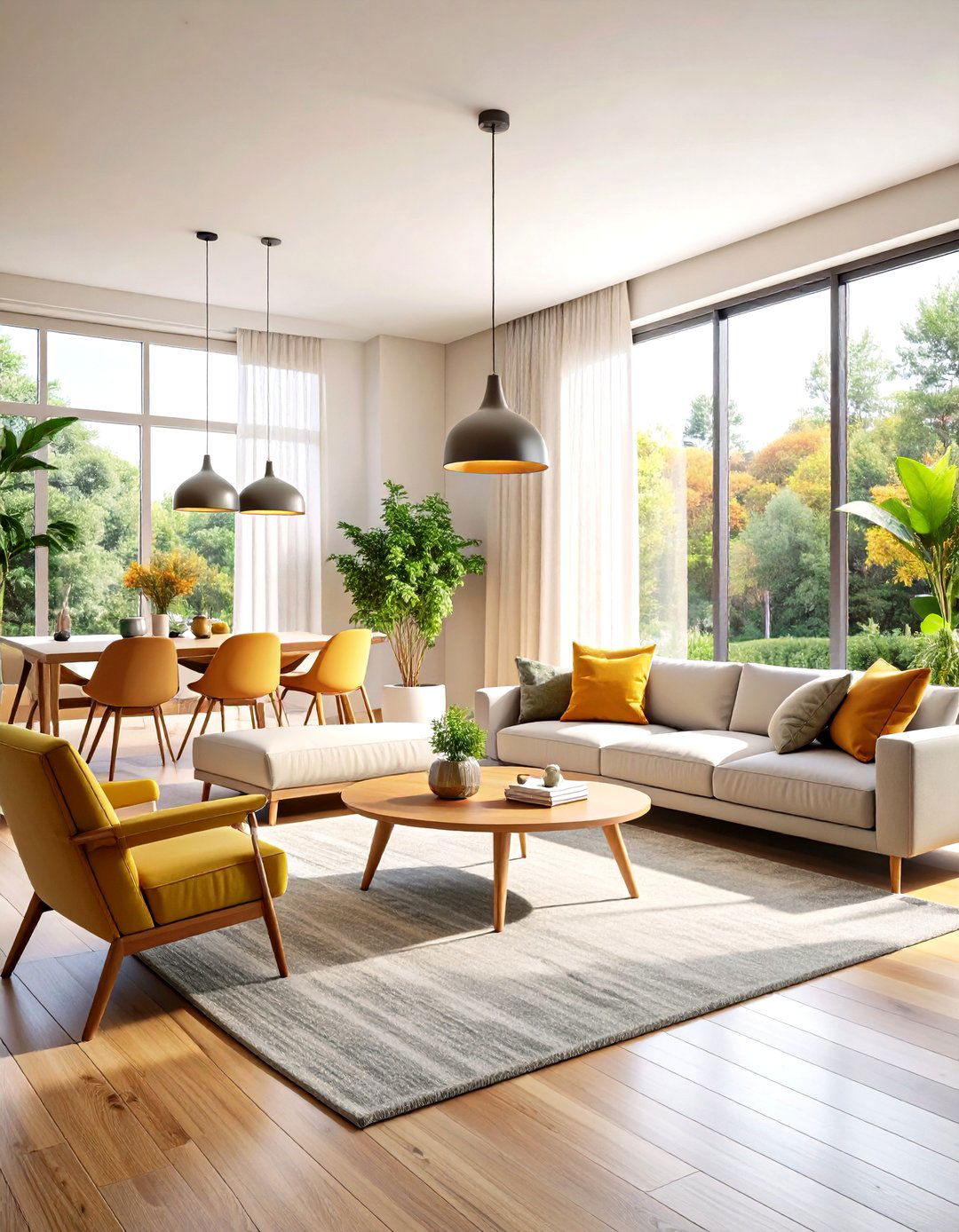
Consider the power of less-is-more philosophy in minimalist contemporary interior design, where every element serves a deliberate purpose. This approach eliminates visual clutter through carefully curated color schemes, typically featuring neutral foundations with occasional monochromatic accents. The beauty lies within contrast and light, creating spacious environments that feel larger and more serene through strategic furniture placement and abundant natural illumination. Essential features include built-in storage solutions, geometric forms, and negative space that allows rooms to breathe. Quality takes precedence over quantity, with investment pieces like platform beds, sleek dining tables, and architectural lighting fixtures. Minimalist contemporary interior design promotes mental clarity and peaceful living by reducing distractions, making it ideal for modern urbanites seeking sanctuary from busy lifestyles.
3. Maximalist Contemporary Interior Design Style
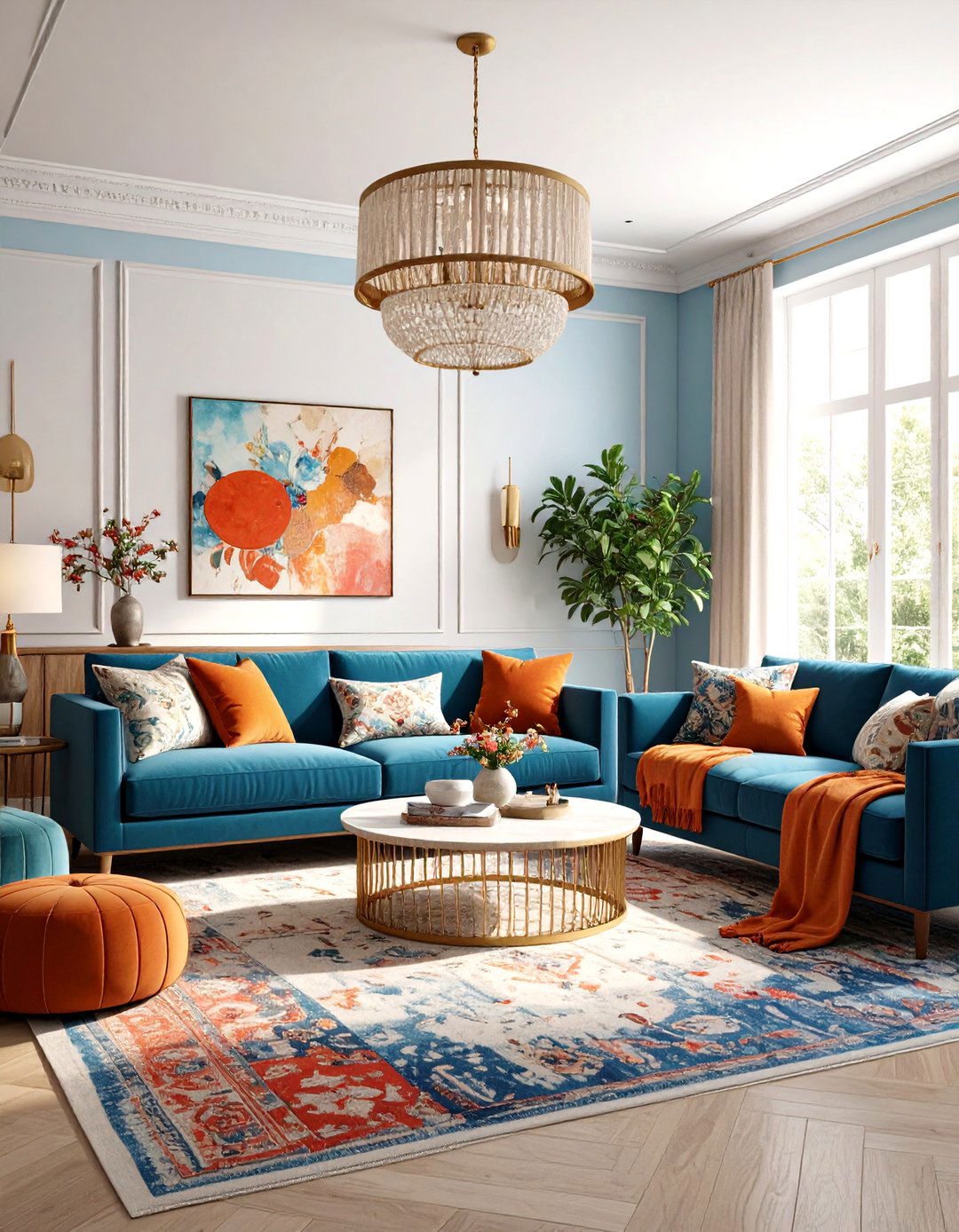
Embrace the bold "more-is-more" philosophy of maximalist contemporary interior design, where vibrant colors, eclectic patterns, and abundant textures create visually captivating spaces. This style celebrates personal expression through layered elements, mixing vintage finds with contemporary pieces, and showcasing collections that tell meaningful stories. Success lies in maintaining balance despite abundance, using consistent color themes or repeated motifs to create cohesion. Statement furniture, oversized artwork, and dramatic lighting fixtures serve as conversation starters while reflecting personality. Pattern mixing becomes an art form, combining florals with geometrics, stripes with abstracts, all unified by thoughtful color coordination. Maximalist contemporary interior design transforms homes into immersive galleries where creativity flourishes, perfect for individuals who find joy in surrounding themselves with meaningful objects and bold artistic expressions.
4. Industrial Contemporary Interior Design Style
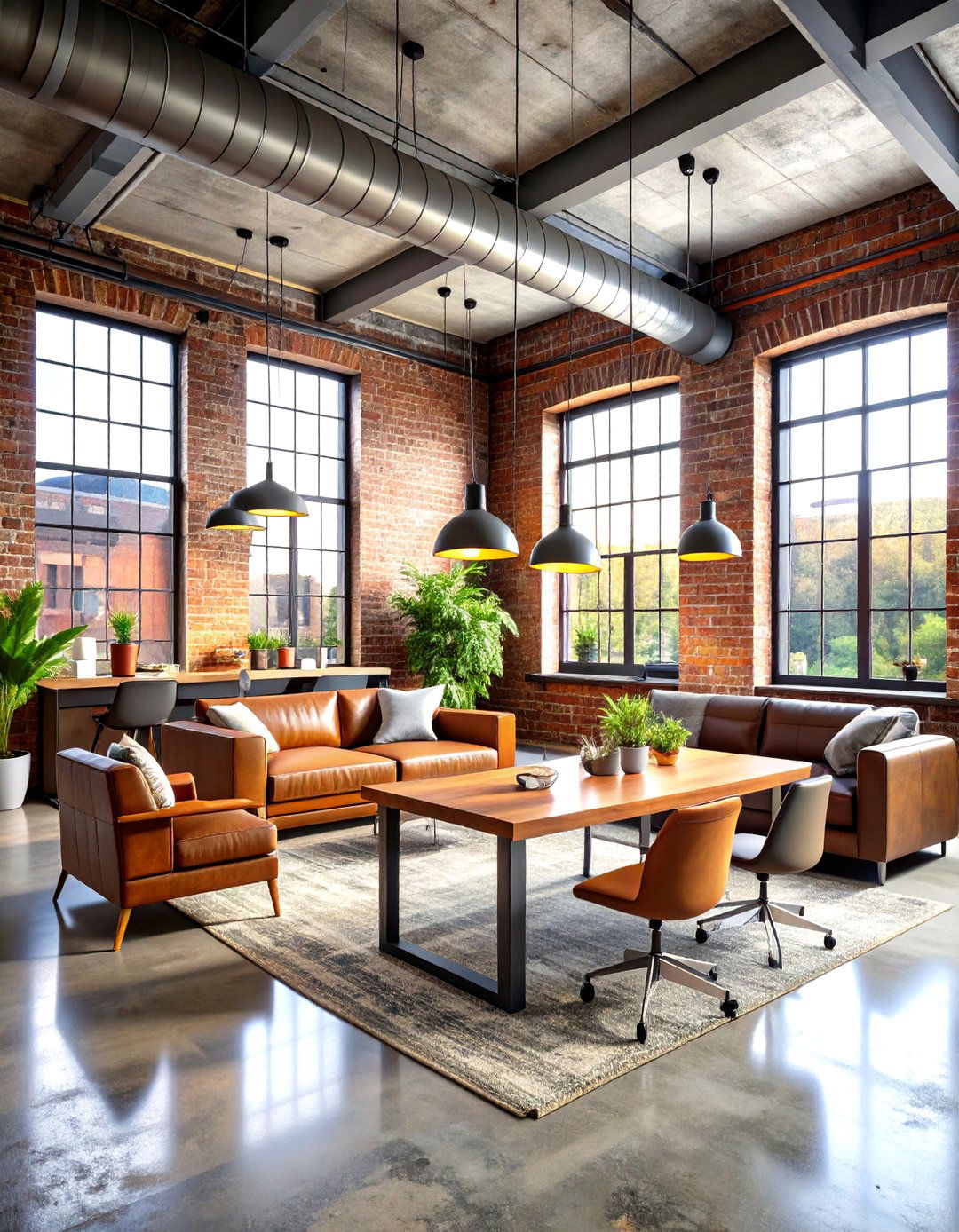
Raw authenticity defines industrial contemporary interior design, celebrating the beauty of exposed structural elements and utilitarian materials. This style originated from converting warehouses and factories into living spaces, embracing exposed brick walls, visible ductwork, concrete floors, and metal fixtures. Color palettes typically feature neutral grays, blacks, and browns, punctuated by warm wood tones that soften the harder industrial elements. Key features include loft-style windows, open floor plans, and furniture that combines metal frameworks with reclaimed wood surfaces. Edison bulb lighting, vintage leather furniture, and repurposed industrial artifacts add character and authenticity. The industrial contemporary interior design style works exceptionally well in urban environments, offering sophisticated edge while maintaining functionality. This approach appeals to those who appreciate honest materials and architectural history.
5. Biophilic Contemporary Interior Design Style

Bringing nature indoors becomes the central focus of biophilic contemporary interior design, creating spaces that enhance human wellbeing through natural connections. This approach incorporates living plants, natural materials like stone and wood, and design elements that mimic organic forms to improve cognitive function and reduce stress. Essential features include living walls, large windows maximizing natural light, water features providing soothing sounds, and textures that evoke natural landscapes. From moss-like carpets to tree bark-inspired wall panels, every element reinforces the connection between indoor and outdoor environments. Air-purifying plants, natural ventilation systems, and sustainable materials support both aesthetic and environmental goals. Biophilic contemporary interior design represents more than decoration; it creates regenerative spaces that promote healing, productivity, and ecological consciousness while addressing modern urbanites' need for natural connection.
6. Mid-Century Modern Contemporary Interior Design Style
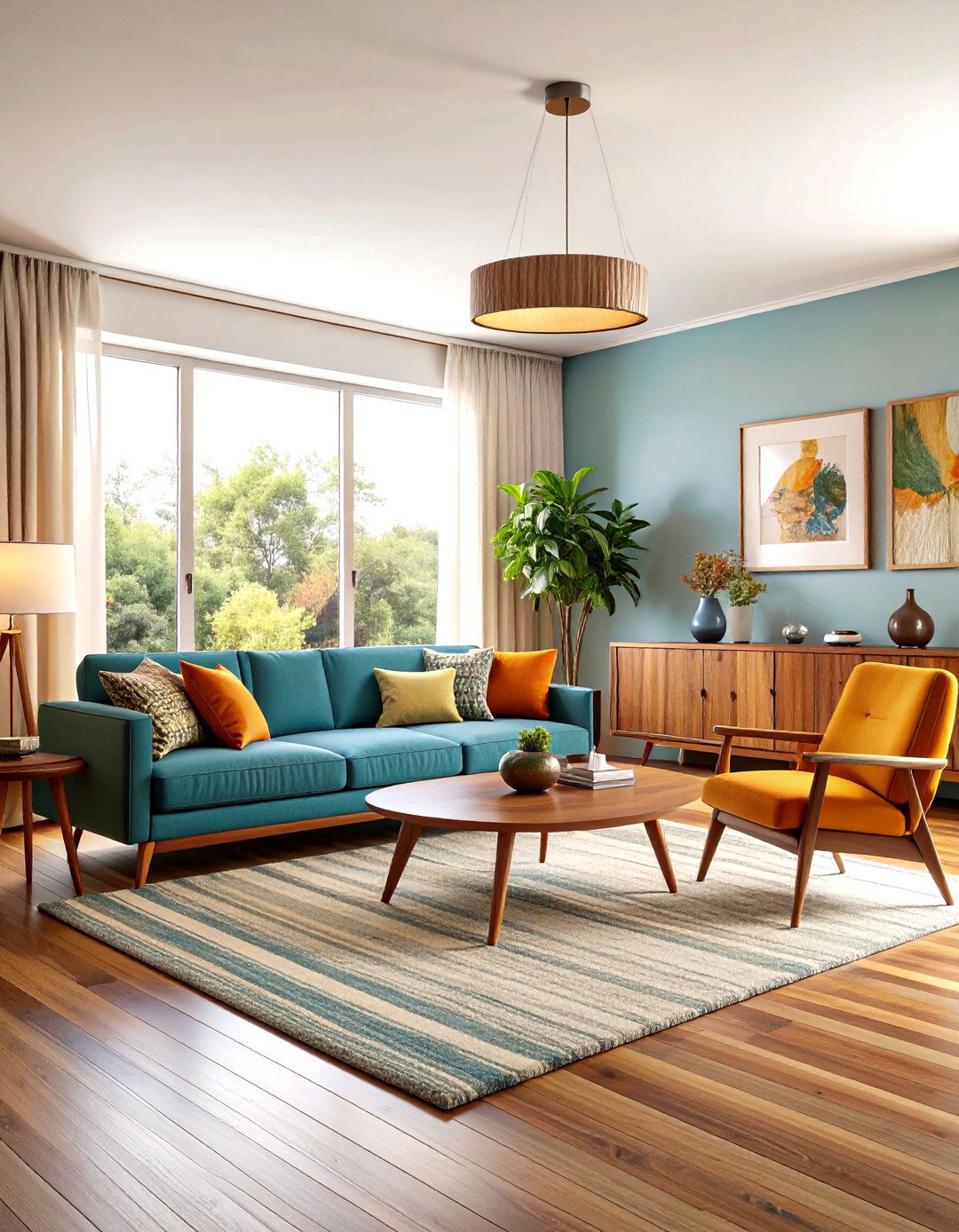
Timeless sophistication characterizes mid-century modern contemporary interior design, blending 1950s-60s aesthetic principles with today's functional needs. This style emphasizes clean lines, geometric shapes, and honest use of materials, creating spaces that feel both nostalgic and thoroughly modern. Iconic furniture pieces feature tapered legs, organic curves, and rich wood grains, particularly teak and walnut. Color schemes often include warm neutrals punctuated by bold jewel tones or classic combinations like orange and turquoise. Integration with other styles, such as Japandi elements or contemporary art, creates fresh interpretations while maintaining the movement's core philosophy of form following function. Statement lighting, whether sculptural floor lamps or geometric pendants, serves as functional art. Mid-century modern contemporary interior design appeals to those who appreciate craftsmanship, timeless design, and the optimistic spirit of modernism.
7. Brutalist Contemporary Interior Design Style
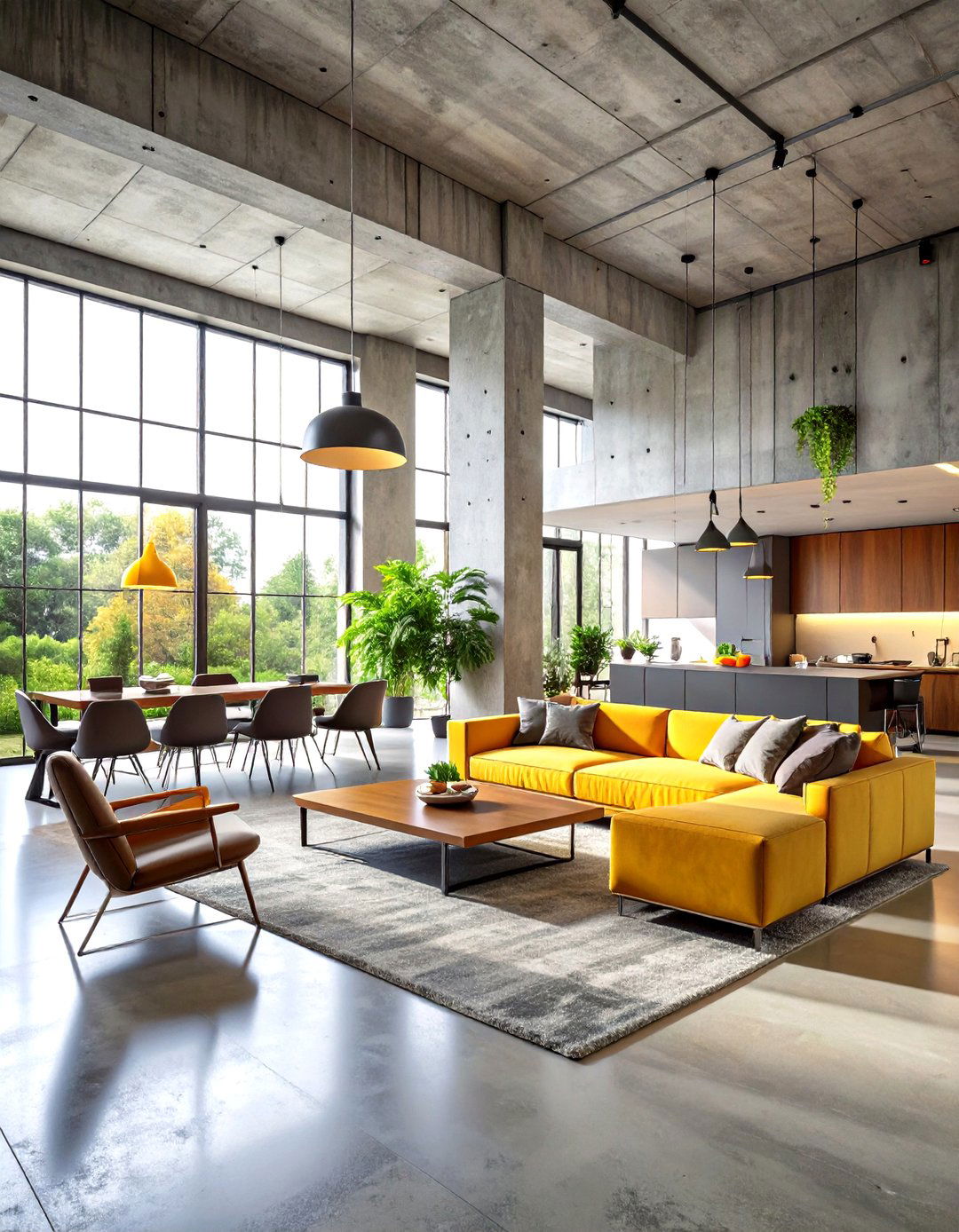
Bold architectural honesty defines brutalist contemporary interior design, celebrating raw concrete, angular geometries, and monumental scale. This controversial yet captivating style emphasizes unadorned materials, massive proportions, and sculptural forms that create striking visual impact. Contemporary interpretations soften the harsh edges through warmer lighting, organic textiles, and strategic plant placement while maintaining the style's essential character. Key materials include exposed concrete, weathered metals with patina finishes, and industrial elements like torch-cut fixtures or geometric sculptures. Color palettes remain predominantly monochromatic, focusing on grays and earth tones. Modern brutalist contemporary interior design appeals to those who appreciate uncompromising aesthetics and architectural drama, creating spaces that feel both imposing and surprisingly intimate through thoughtful material choices and spatial organization.
8. Art Deco Contemporary Interior Design Style
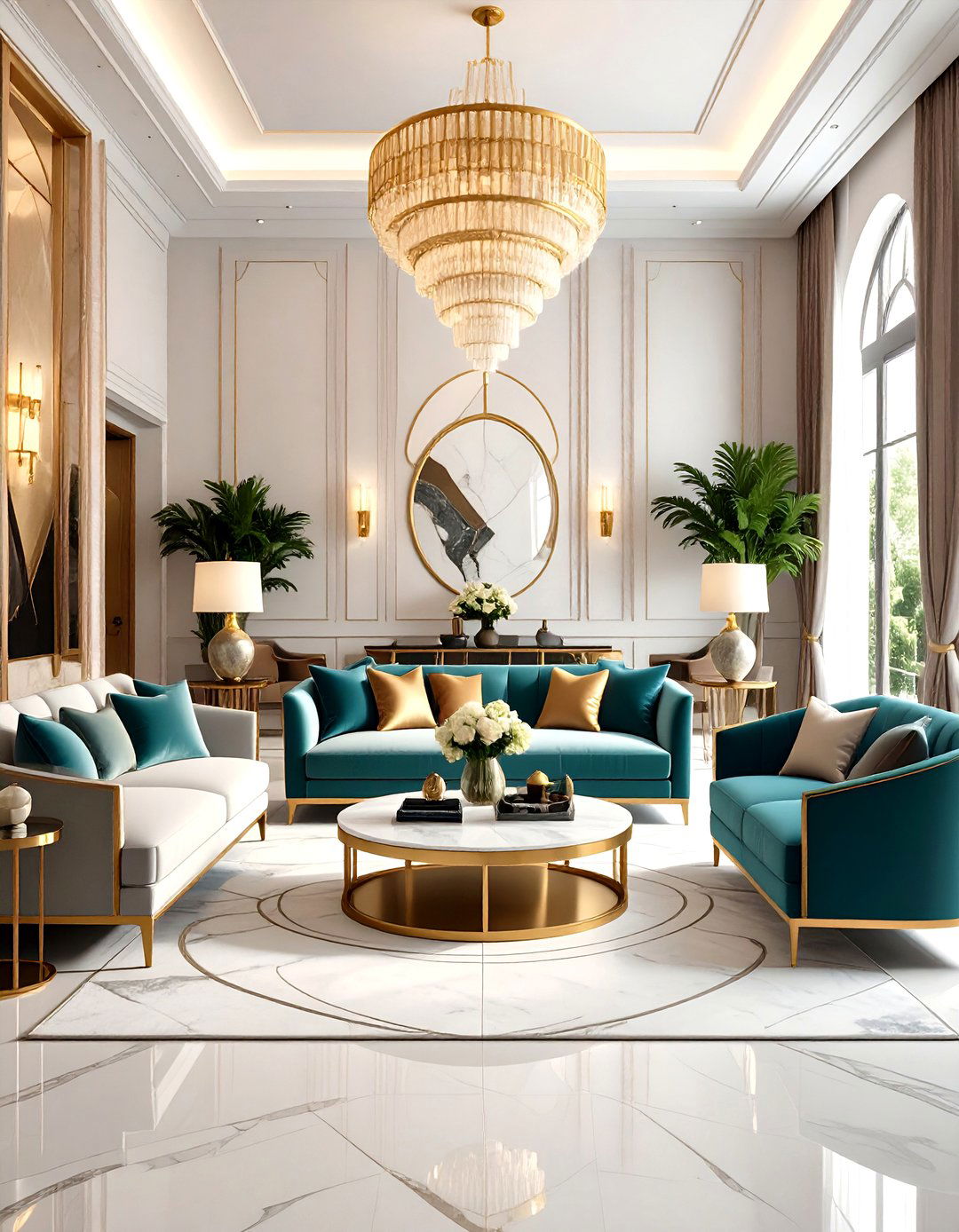
Luxurious glamour meets modern functionality in Art Deco contemporary interior design, reviving the sophisticated elegance of the 1920s-30s era. This style features geometric patterns, rich materials like brass and marble, smooth curves, and opulent finishes that create dramatic focal points. Contemporary interpretations balance vintage luxury with current lifestyle needs, incorporating modern technology while maintaining the movement's signature sophistication. Essential elements include metallic accents, geometric mirrors, sculptural lighting fixtures, and bold color combinations featuring deep teals, burgundies, and gold. Furniture showcases sleek silhouettes with luxurious upholstery, while accessories emphasize craftsmanship and artistic detail. Art Deco contemporary interior design transforms spaces into elegant sanctuaries that celebrate both historical glamour and modern innovation, perfect for those who appreciate timeless sophistication with dramatic flair.
9. Neo-Industrial Contemporary Interior Design Style
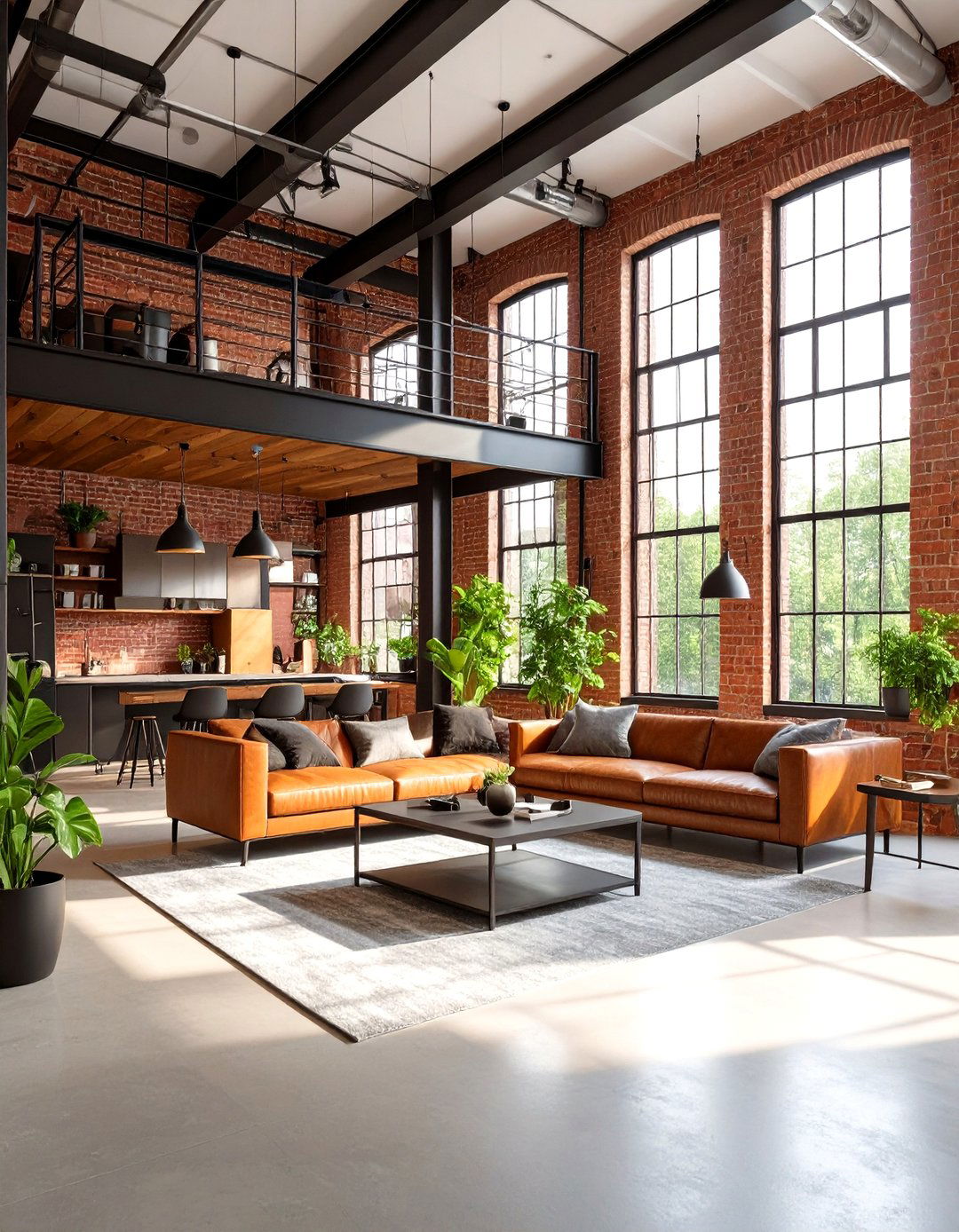
Modern interpretations of industrial aesthetics create neo-industrial contemporary interior design, combining urban edge with contemporary comfort and sustainability. This evolution maintains industrial elements like exposed brick and metal fixtures while incorporating warmer materials and refined finishes. Unlike traditional industrial design, neo-industrial embraces color, comfort, and technological integration while preserving the style's authentic character. Key features include polished concrete floors, steel-framed furniture with contemporary upholstery, and ambient lighting that softens harsh edges. Sustainability becomes central through reclaimed materials, energy-efficient systems, and adaptive reuse principles that honor industrial heritage. Plants and natural textures provide organic contrast to harder surfaces. Neo-industrial contemporary interior design appeals to urban dwellers who appreciate industrial authenticity while demanding modern comfort, creating spaces that bridge past and present through thoughtful material choices.
10. Transitional Contemporary Interior Design Style
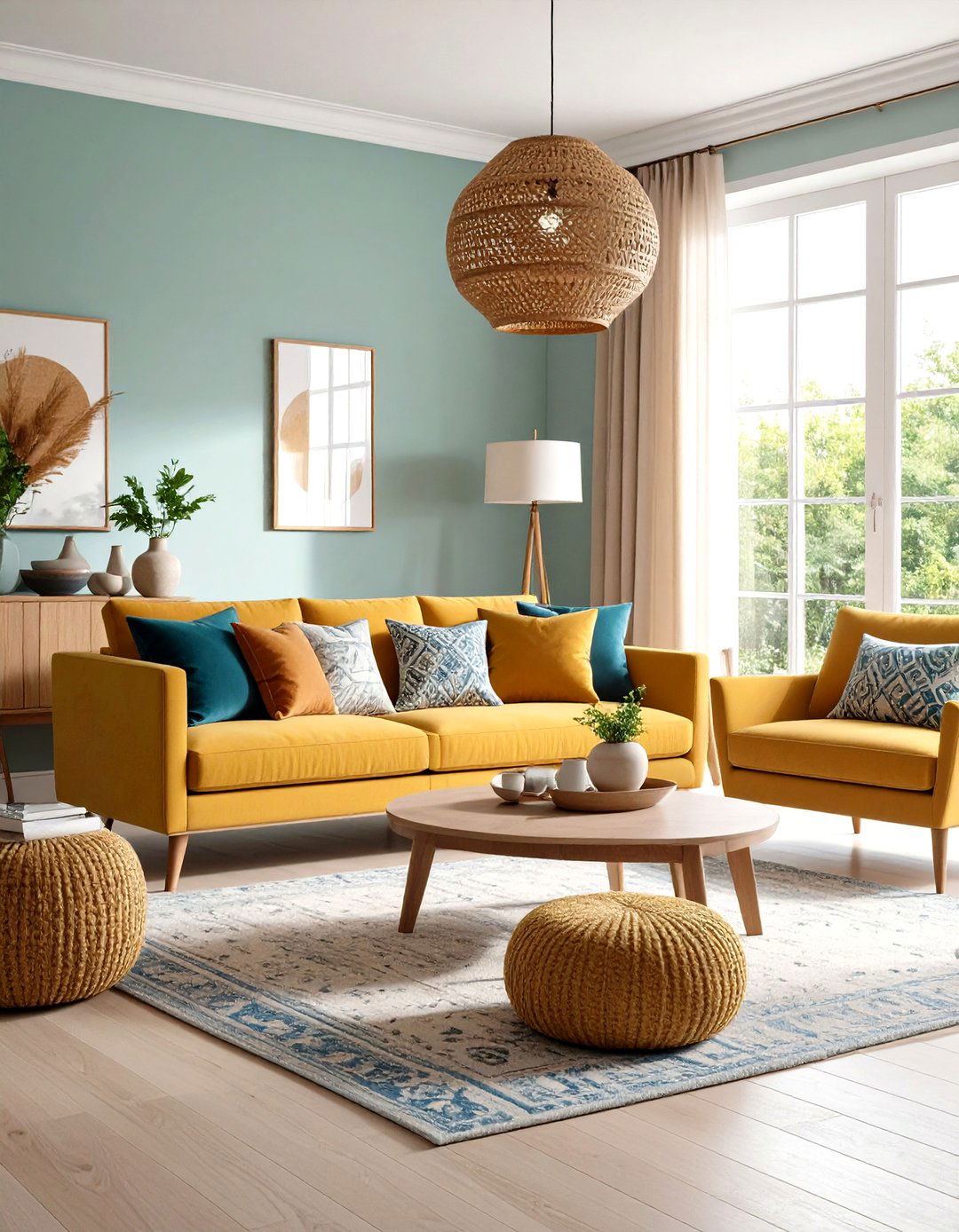
Harmonious balance between traditional elegance and modern simplicity defines transitional contemporary interior design, creating timelessly sophisticated spaces. This approach combines classic furniture silhouettes with contemporary colors, materials, and functionality to achieve spaces that feel both familiar and fresh. Essential elements include neutral color palettes, mixed textures, and furniture that blends curved and linear elements. Traditional pieces like tufted sofas pair beautifully with sleek coffee tables and modern artwork. The style emphasizes quality craftsmanship and natural materials while incorporating current technology and lifestyle needs. Lighting often mixes classic chandeliers with contemporary task lighting. Transitional contemporary interior design offers flexibility and personalization, allowing homeowners to honor architectural heritage while embracing modern convenience, making it ideal for those who appreciate both historical character and contemporary functionality.
11. Curved Furniture Contemporary Interior Design Style

Organic fluidity transforms spaces through curved furniture contemporary interior design, introducing softness and movement that counters rigid architectural lines. This trend features rounded sofas, circular coffee tables, and furniture with flowing edges that create inviting, harmonious environments. Beyond aesthetics, curved forms promote better traffic flow and create intimate conversation areas within larger spaces. Materials range from plush upholstered seating to sculptural metal and wood pieces that serve as functional art. The psychological impact includes increased comfort and reduced stress, as curved forms feel more natural and welcoming than sharp angles. Color palettes often remain neutral to emphasize form over pattern. Curved furniture contemporary interior design works particularly well in open-plan layouts, where organic shapes help define zones while maintaining visual flow, appealing to those who seek comfort and sophisticated design.
12. Sustainable Contemporary Interior Design Style
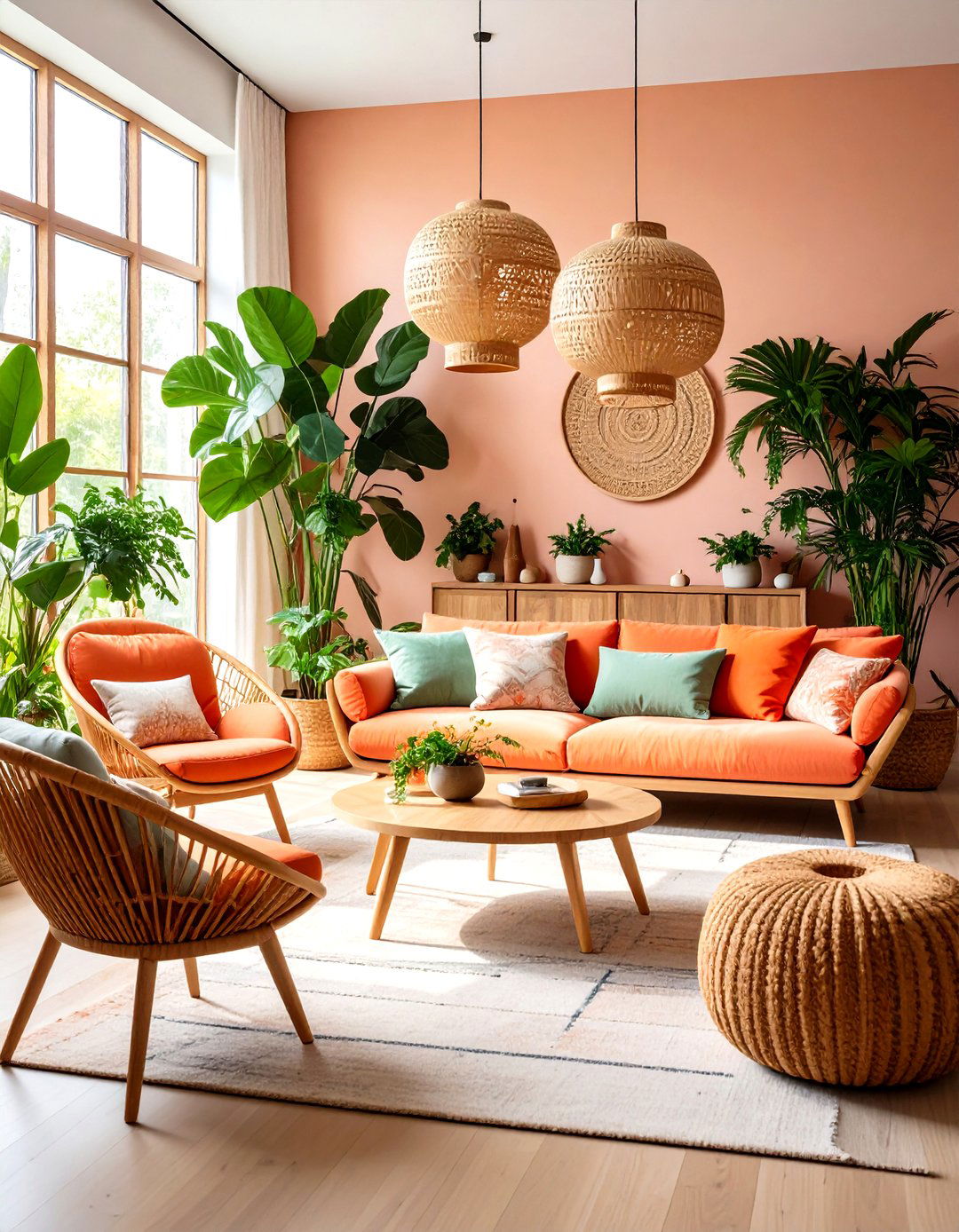
Environmental consciousness drives sustainable contemporary interior design, creating beautiful spaces while minimizing ecological impact through mindful material choices. This approach prioritizes reclaimed materials, renewable resources, and locally sourced elements while emphasizing durability and timeless design over trendy disposability. Key features include bamboo flooring, recycled metal fixtures, low-VOC finishes, and furniture crafted from sustainable sources. Energy efficiency becomes integral through LED lighting, smart home systems, and natural ventilation strategies that reduce consumption while improving comfort. Quality craftsmanship ensures longevity, supporting buy-once philosophies that reduce waste. Plant integration improves air quality while supporting biophilic principles. Sustainable contemporary interior design appeals to environmentally conscious individuals who refuse to compromise beauty for responsibility, proving that eco-friendly choices enhance rather than limit aesthetic possibilities.
13. Moody Color Contemporary Interior Design Style
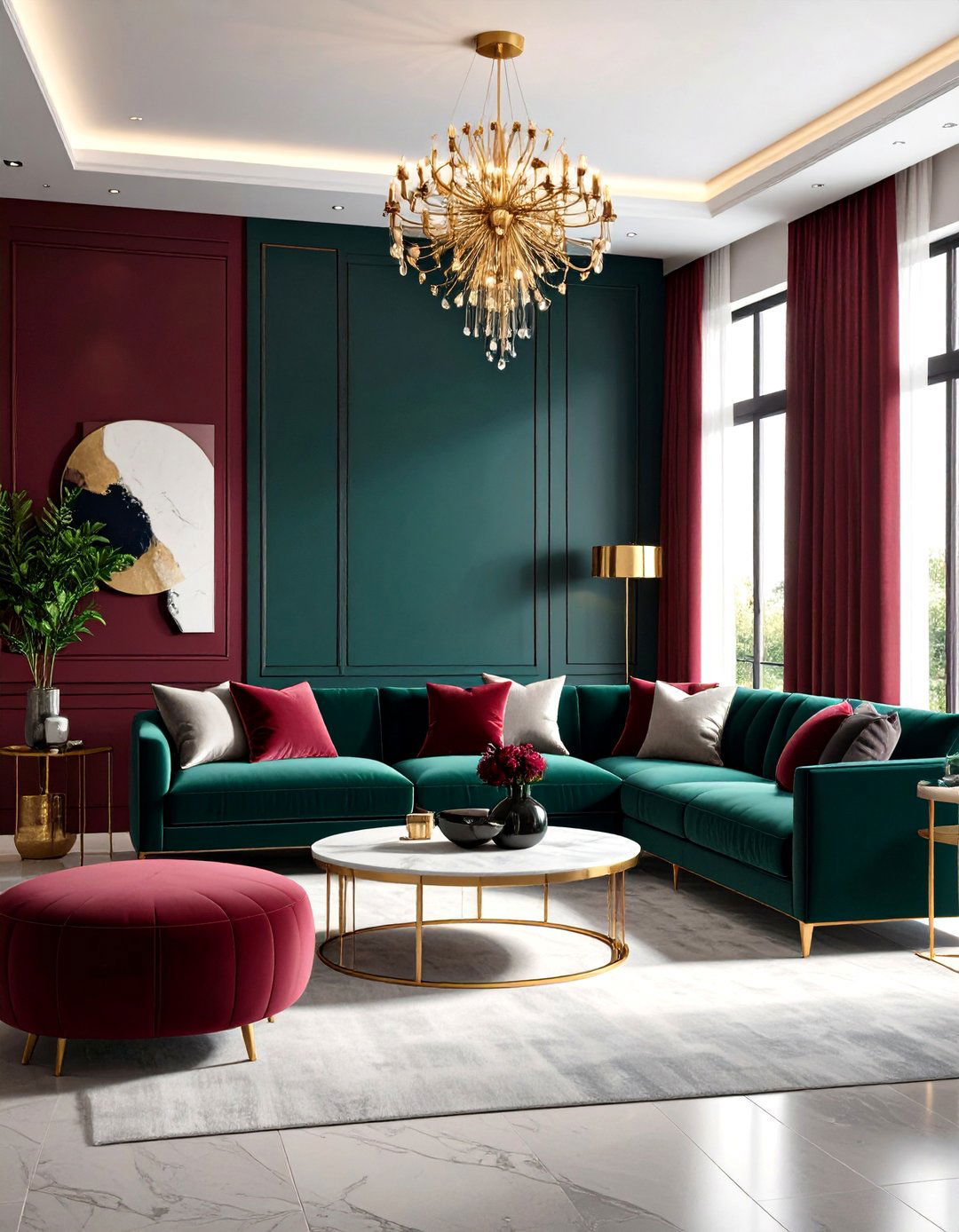
Rich, saturated hues create dramatic sophistication in moody color contemporary interior design, embracing deep tones that evoke comfort and luxury. This trend features warm browns, deep navy, forest green, and burgundy that create cocooning environments perfect for relaxation and contemplation. The technique often involves color drenching, where walls, ceilings, and trim share the same rich tone to create immersive, enveloping spaces. Lighting becomes crucial, with warm LED strips and sculptural fixtures that enhance rather than fight the dramatic colors. Textures play important roles through velvet upholstery, matte finishes, and natural materials that add depth. Metallic accents in brass or copper provide warmth while maintaining sophistication. Moody color contemporary interior design appeals to those seeking retreat from stark minimalism, creating intimate spaces that feel both luxurious and profoundly comforting.
14. Textured Wall Contemporary Interior Design Style
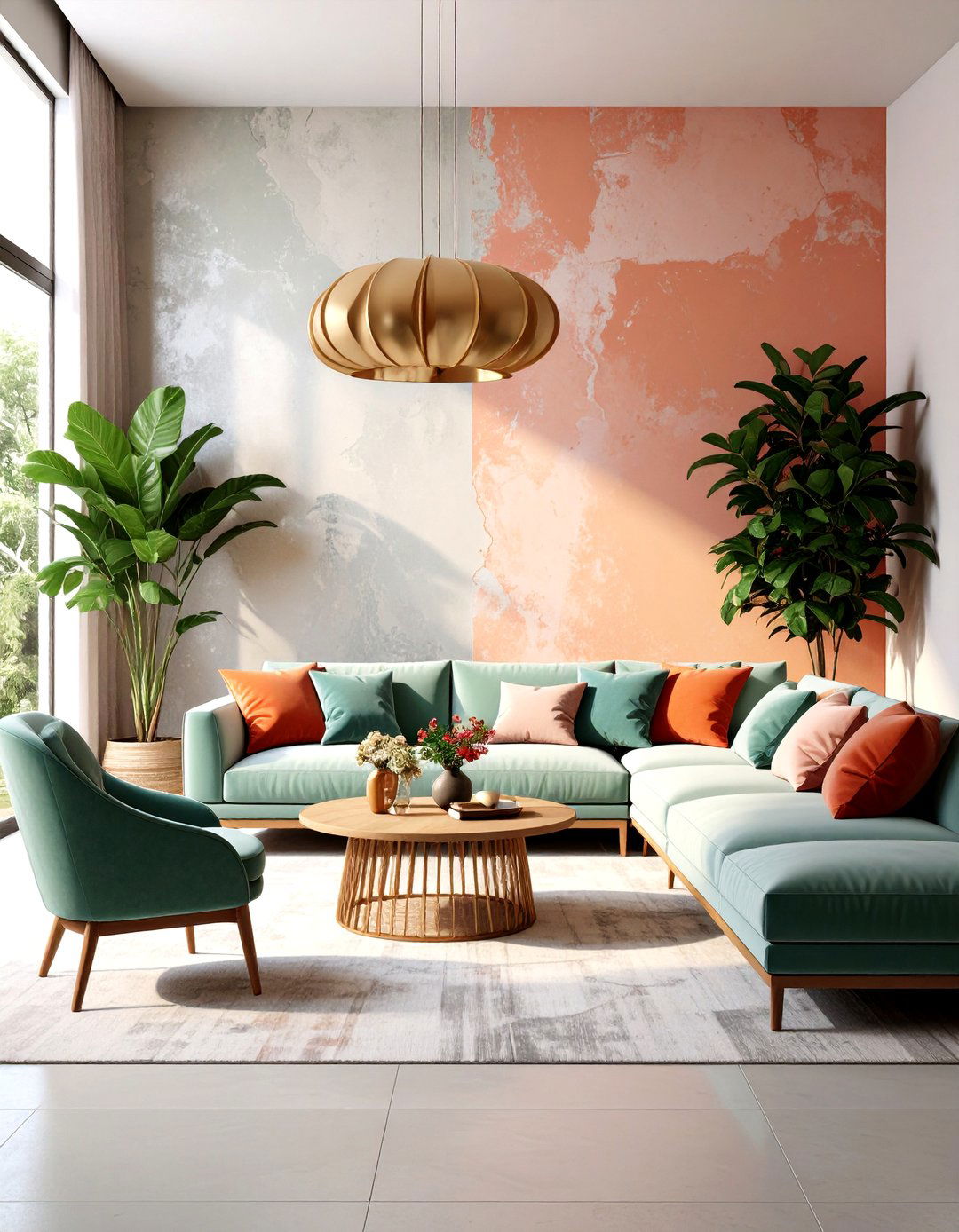
Tactile richness transforms spaces through textured wall contemporary interior design, moving beyond flat paint to create engaging, multi-dimensional surfaces. Popular techniques include limewash applications that provide organic movement, natural plasters with clay-based finishes, and board-formed concrete that adds architectural drama. These applications work in various rooms, from bedrooms with subtle limewash to dramatic dining rooms featuring stone or wood textures. Installation methods range from professional applications to accessible techniques that homeowners can master. Lighting design becomes crucial, as textured surfaces interact with illumination to create dynamic shadow play throughout the day. Color choices often remain neutral to emphasize texture over pattern. Natural materials like clay and limestone support biophilic design principles while providing environmental benefits. Textured wall contemporary interior design appeals to those seeking sensory richness and architectural interest without overwhelming spaces.
15. Smart Technology Contemporary Interior Design Style
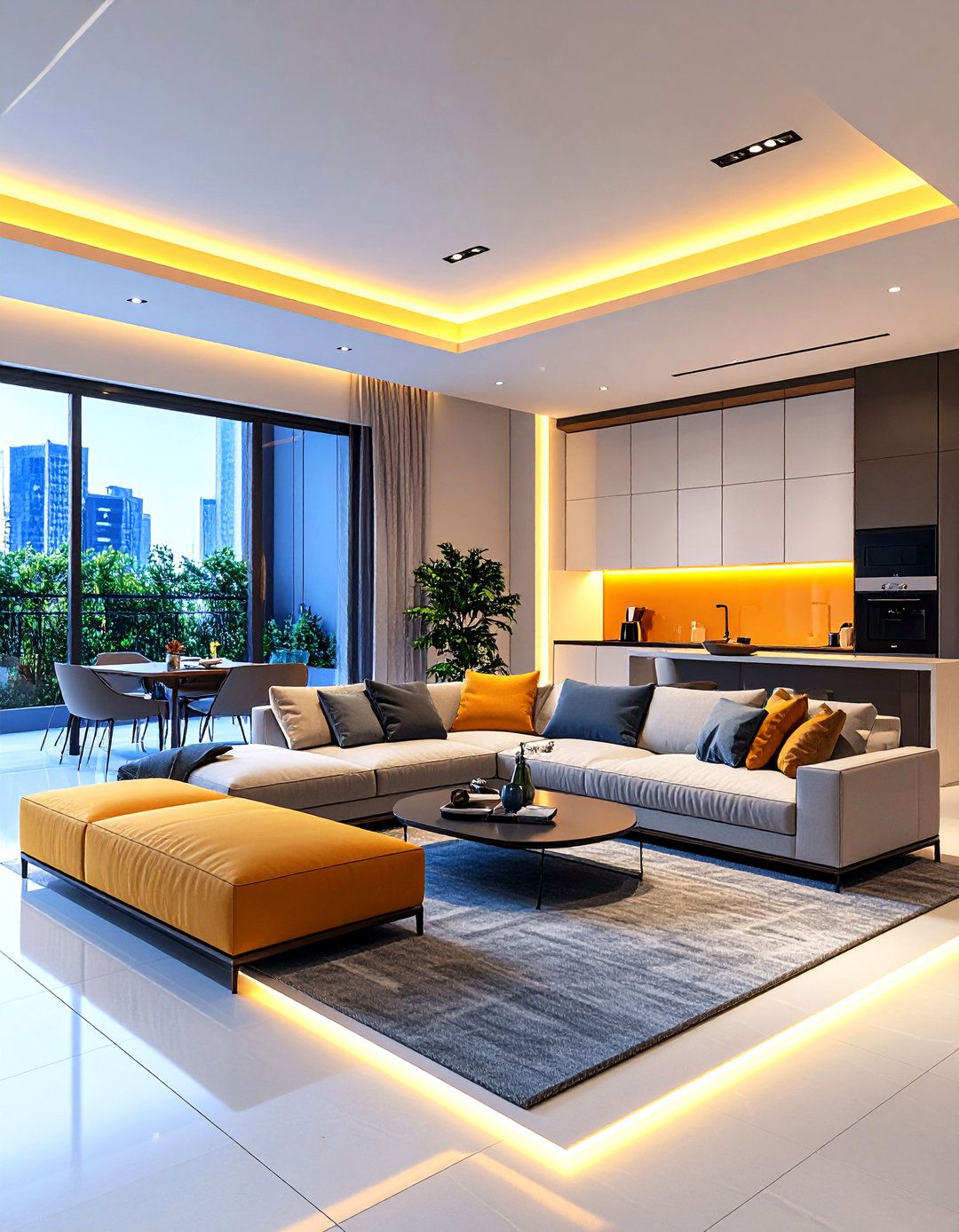
Seamless integration defines smart technology contemporary interior design, where innovation enhances comfort while maintaining aesthetic integrity. Modern homes incorporate automated lighting systems, climate control, security features, and entertainment systems that respond to lifestyle patterns. Essential elements include hidden wiring, wireless charging surfaces integrated into furniture, and voice-activated controls that eliminate visible technology clutter. Smart mirrors, automated window treatments, and adaptive lighting that adjusts throughout the day support both convenience and wellbeing. Energy efficiency becomes automatic through systems that optimize consumption while maintaining comfort. Design challenges include maintaining clean aesthetics while accommodating technical requirements and ensuring user-friendly interfaces. Smart technology contemporary interior design appeals to tech-savvy individuals who demand cutting-edge functionality without sacrificing beautiful, uncluttered spaces that adapt to their evolving needs.
16. Gallery Wall Contemporary Interior Design Style
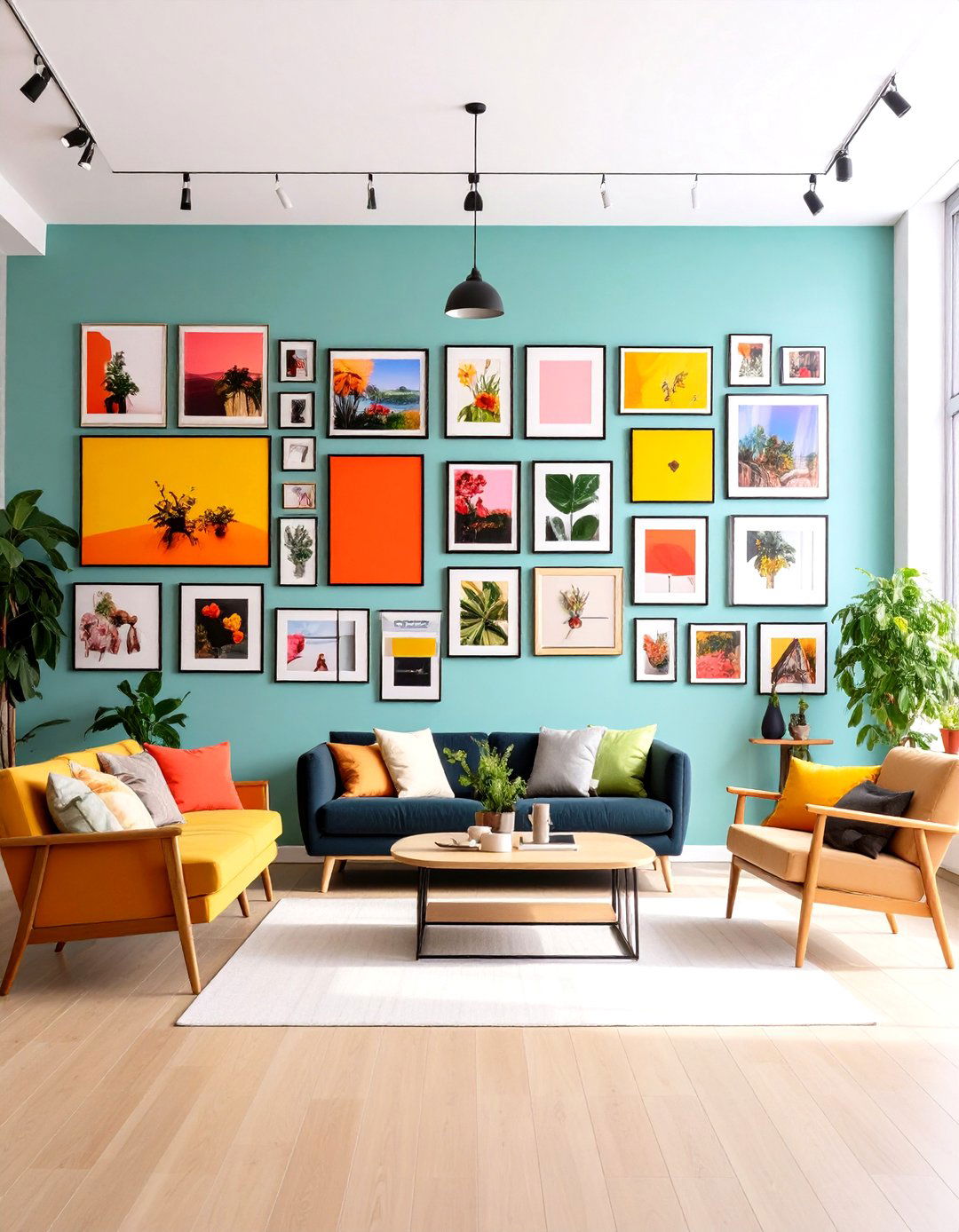
Artistic curation becomes central to gallery wall contemporary interior design, transforming blank surfaces into dynamic displays that reflect personality and interests. This trend embraces whimsical combinations of paintings, prints, photographs, and three-dimensional objects in varying sizes and frames. Success requires thoughtful planning, considering color relationships, scale variations, and visual weight distribution across the composition. Popular approaches include salon-style arrangements with multiple small pieces or statement combinations featuring fewer, larger works. Frame materials range from matching sets for cohesion to eclectic mixes that add character. Installation techniques include grid layouts for formal spaces or organic arrangements for casual areas. The playful, relaxed approach allows for personal expression while creating sophisticated focal points. Gallery wall contemporary interior design appeals to art lovers and collectors seeking creative ways to display meaningful pieces.
17. Natural Material Contemporary Interior Design Style
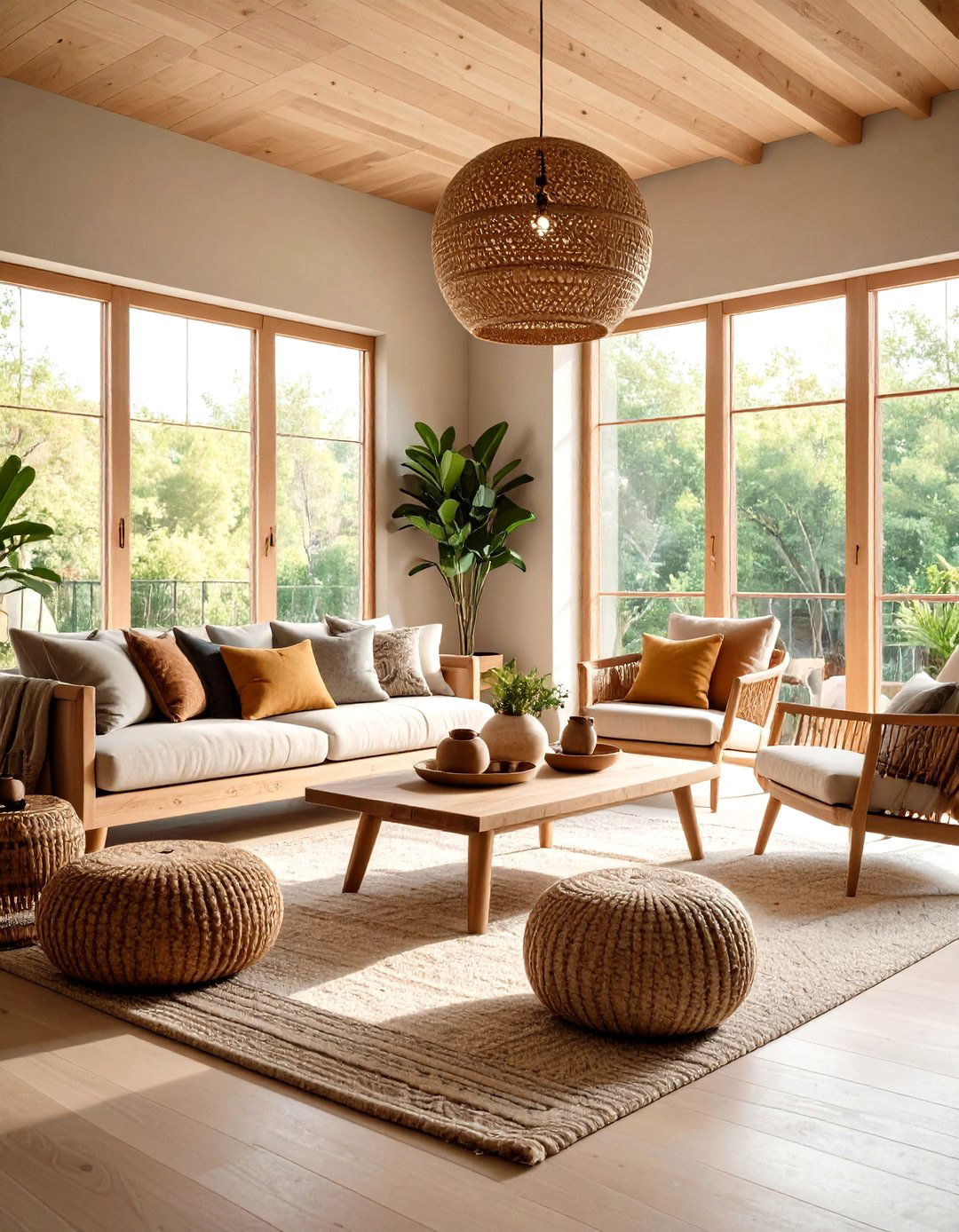
Authentic textures and organic beauty drive natural material contemporary interior design, celebrating wood, stone, metals, and fibers in their most honest forms. This approach emphasizes material quality and craftsmanship, featuring reclaimed wood, natural stone surfaces, and handwoven textiles that add warmth and character. Ceramic and clay-based elements continue gaining popularity for their tactile appeal and environmental benefits. Color palettes remain earth-toned, allowing material variations to provide visual interest through natural grain patterns, stone veining, and textile weaves. The trend toward conscious consumerism supports choosing fewer, higher-quality pieces that showcase exceptional craftsmanship and sustainable sourcing. Installation focuses on highlighting rather than hiding material characteristics. Natural material contemporary interior design appeals to those who appreciate authenticity and environmental responsibility while creating spaces that feel grounded and timeless through honest material expression.
18. Low-Profile Contemporary Interior Design Style
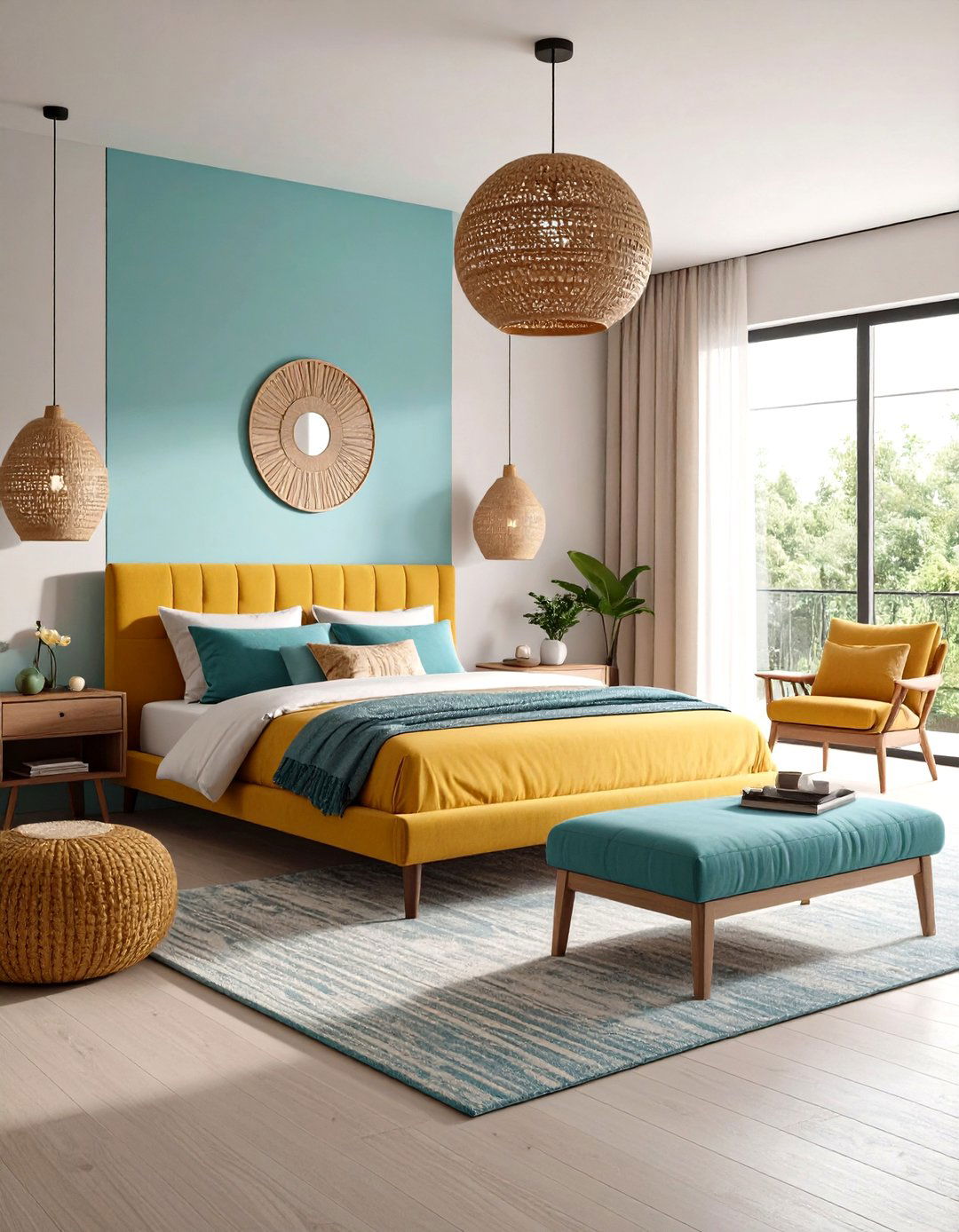
Streamlined elegance characterizes low-profile contemporary interior design, featuring furniture with minimal height that creates spacious, open environments. This approach includes platform beds, low-slung sofas, and horizontal storage solutions that emphasize clean lines and understated sophistication. Visual benefits include making rooms appear larger and more expansive while promoting calm, uncluttered aesthetics. The style aligns with minimalist principles, emphasizing functionality and simplicity over ornate decoration. Color schemes typically remain neutral with occasional accent pieces providing personality. Materials focus on quality rather than quantity, with investment pieces in natural wood, metal, and high-grade upholstery. Low-profile lighting, including recessed fixtures and pendant lights, maintains the horizontal emphasis. This contemporary interior design style appeals to modern urbanites seeking sophisticated spaces that feel larger and more serene through strategic design choices that prioritize openness and tranquility.
19. Sculptural Contemporary Interior Design Style
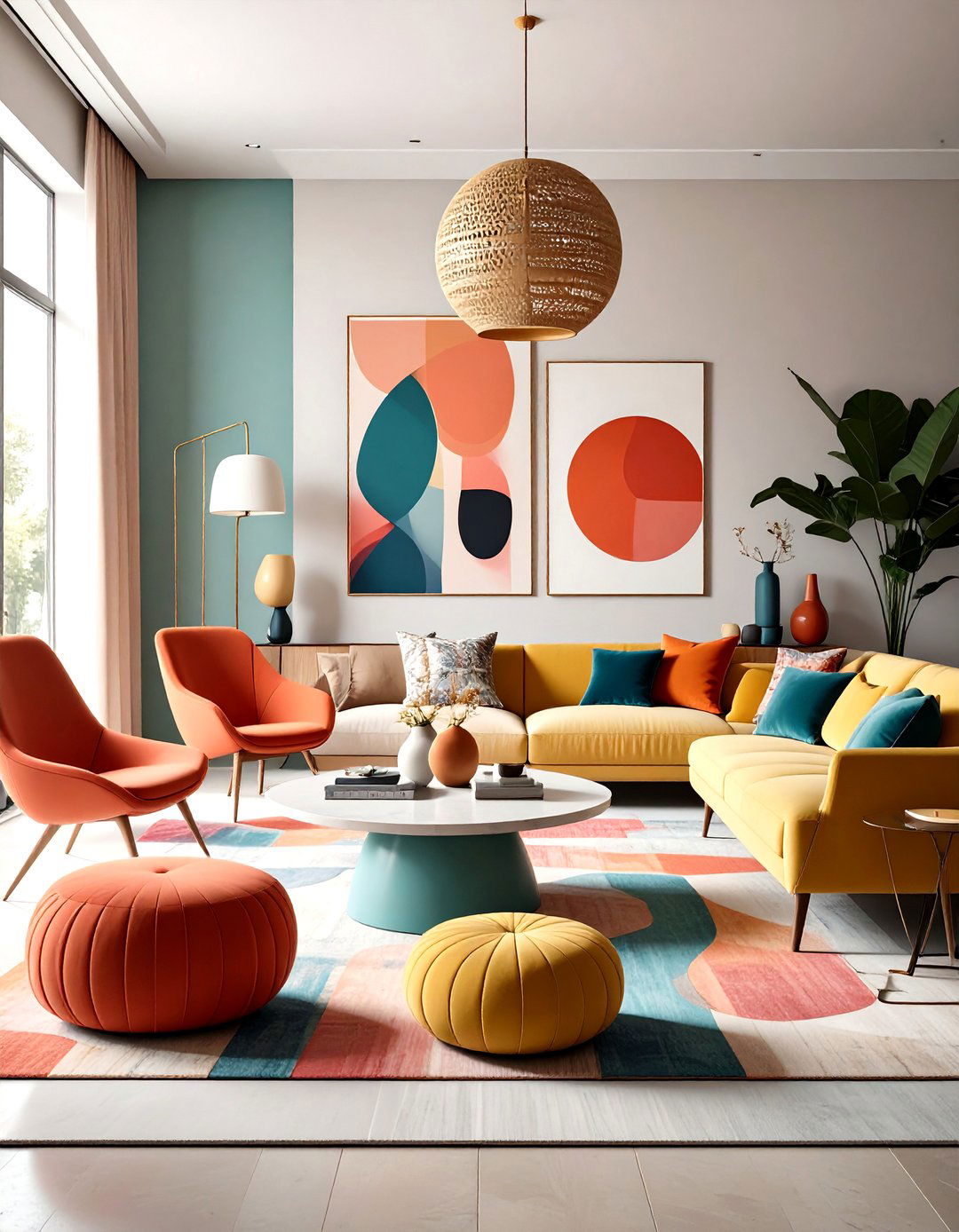
Artistic furniture becomes functional art in sculptural contemporary interior design, where statement pieces serve dual purposes as seating, storage, and aesthetic focal points. This trend features chairs, tables, and lighting fixtures with organic forms, unusual proportions, and artistic silhouettes that transcend traditional furniture categories. Materials range from carved wood and molded metals to innovative composites that allow complex forms. Pieces often showcase unique craftsmanship techniques, including torch-cutting, hand-forging, and artistic welding that create one-of-a-kind surfaces and textures. Color palettes remain neutral to emphasize form over pattern, though metallic finishes and natural wood grains add visual interest. Installation requires careful consideration of scale, proportion, and visual weight to maintain balance while showcasing artistic elements. Sculptural contemporary interior design appeals to those who view furniture as artistic investment, creating spaces that blur boundaries between home and gallery.
20. Vintage-Modern Contemporary Interior Design Style
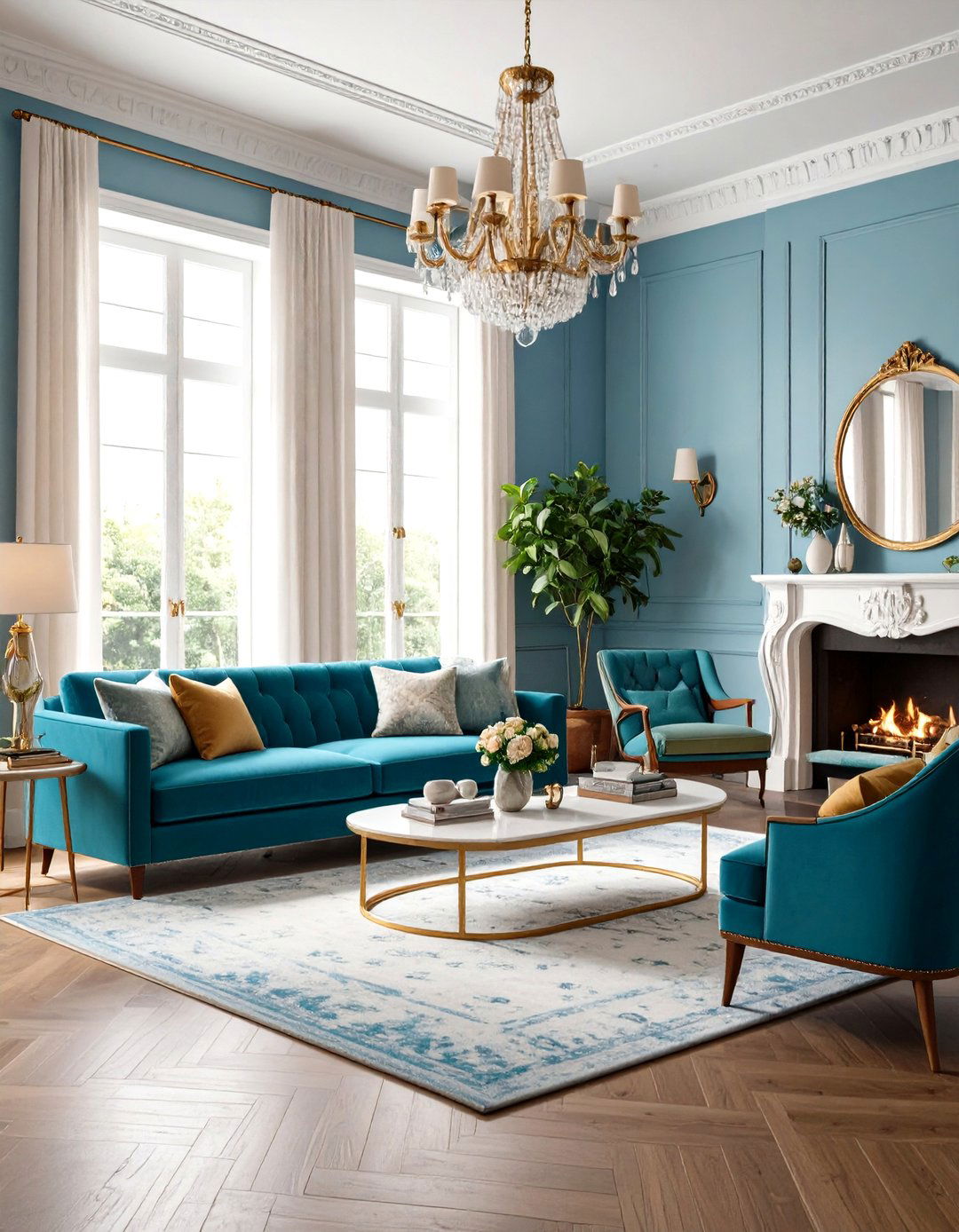
Nostalgic charm meets current functionality in vintage-modern contemporary interior design, blending carefully curated retro pieces with sleek contemporary elements. This approach combines mid-century furniture, vintage accessories, and nostalgic patterns with modern technology and current color trends. Popular eras include 1920s-30s Art Deco elements and mid-century pieces from the 1950s-60s that bring historical character to contemporary spaces. Success requires balancing old and new through thoughtful curation rather than overwhelming spaces with vintage pieces. The trend responds to desires for authenticity and character in an increasingly digital world. Key elements include refurbished vintage furniture, retro lighting fixtures, and classic patterns updated in contemporary colors. Integration techniques include using vintage pieces as statement elements while maintaining modern functionality through updated upholstery and smart home integration. This style appeals to those seeking unique, personalized spaces with historical depth.
Conclusion:
Contemporary interior design in 2025 celebrates diversity, sustainability, and personal expression through innovative approaches that honor both tradition and innovation. From the serene simplicity of Japandi to the bold statements of maximalism, these twenty styles demonstrate how modern design adapts to changing lifestyles while maintaining timeless appeal. The future emphasizes wellness, environmental consciousness, and technology integration that enhances rather than dominates living spaces. Whether embracing natural materials, curved forms, or artistic furniture, successful contemporary design reflects individual personalities while creating functional, beautiful homes. The most impactful approach remains deeply personal, breaking conventional rules to create spaces that truly serve their inhabitants' unique needs and aspirations.



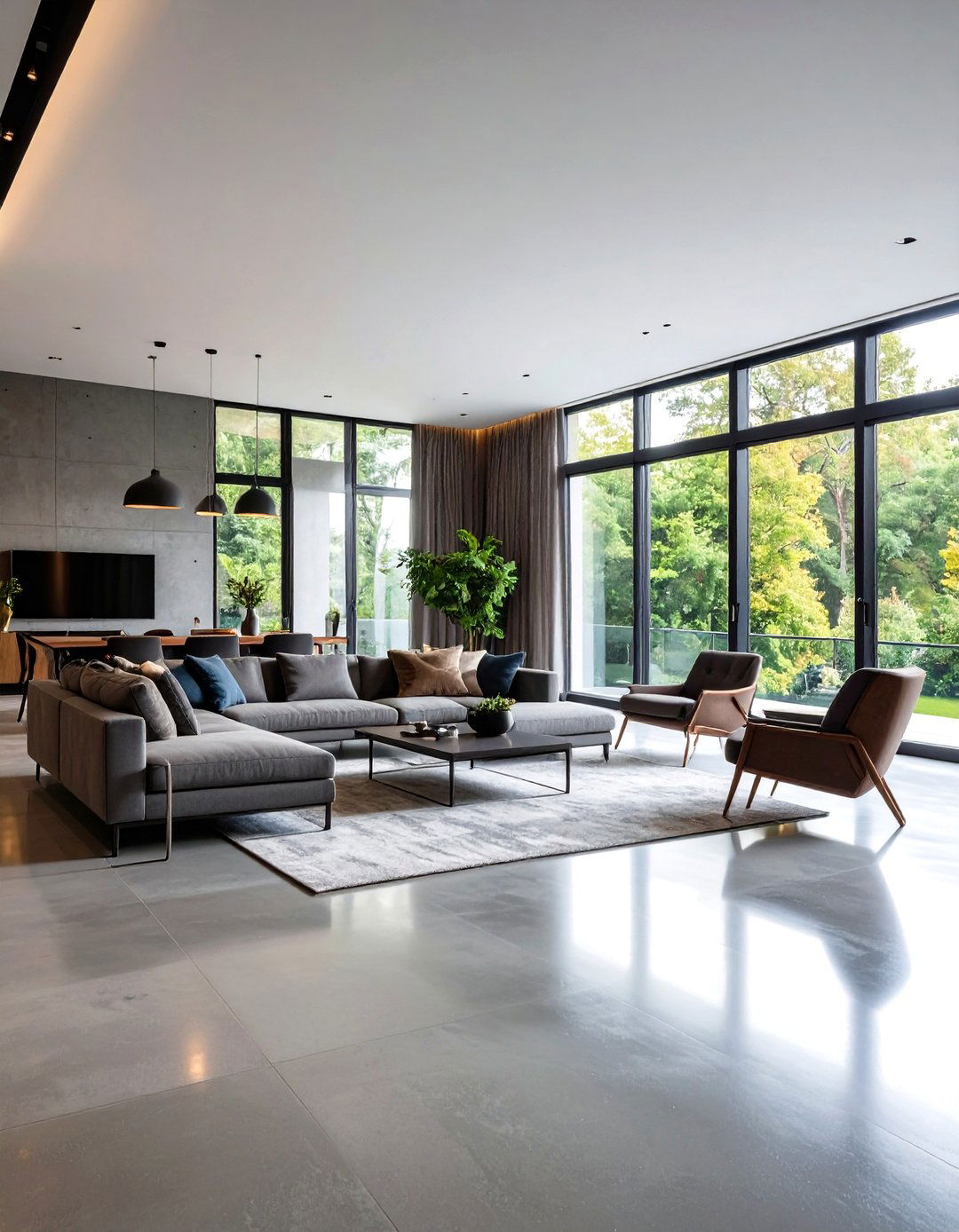

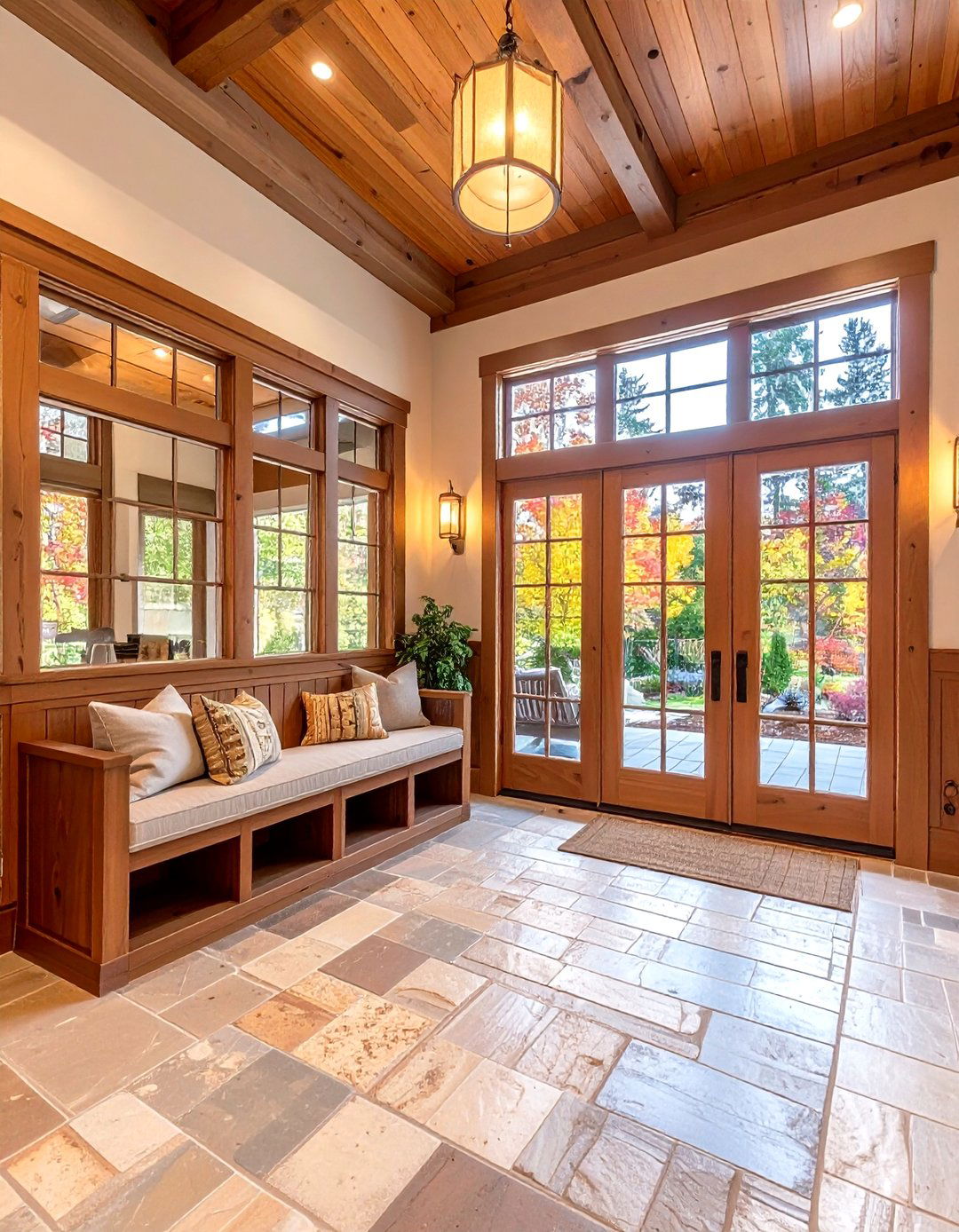

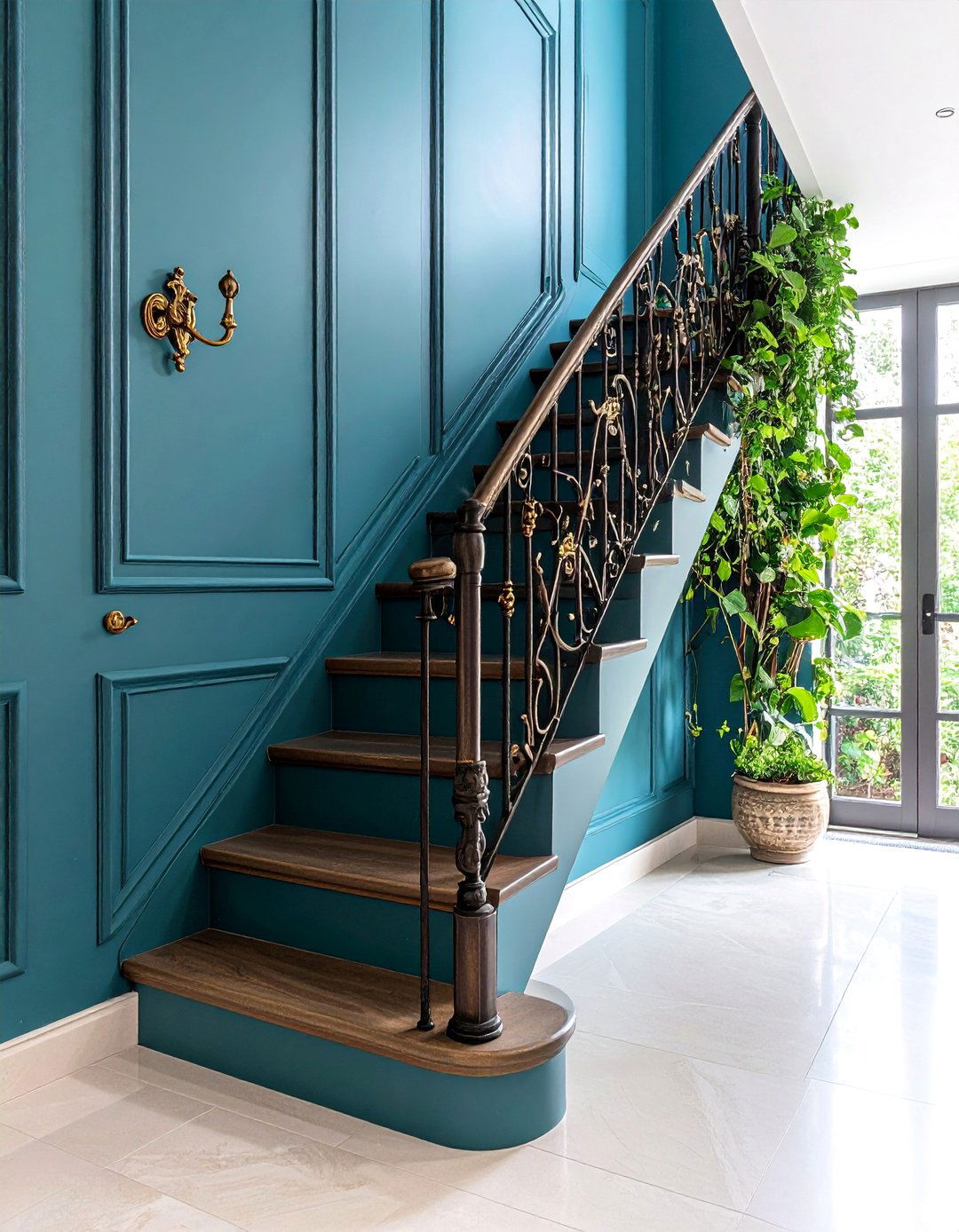
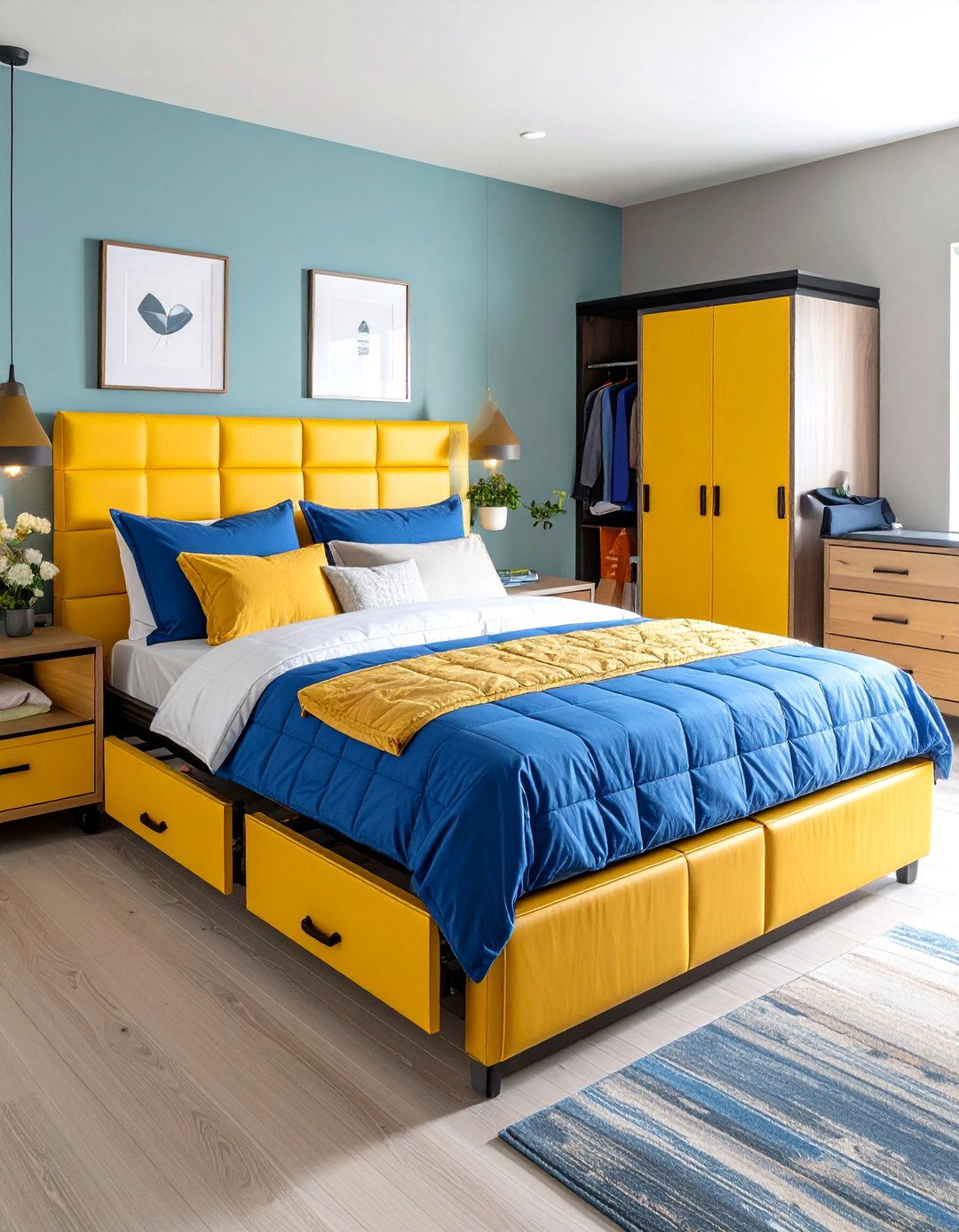

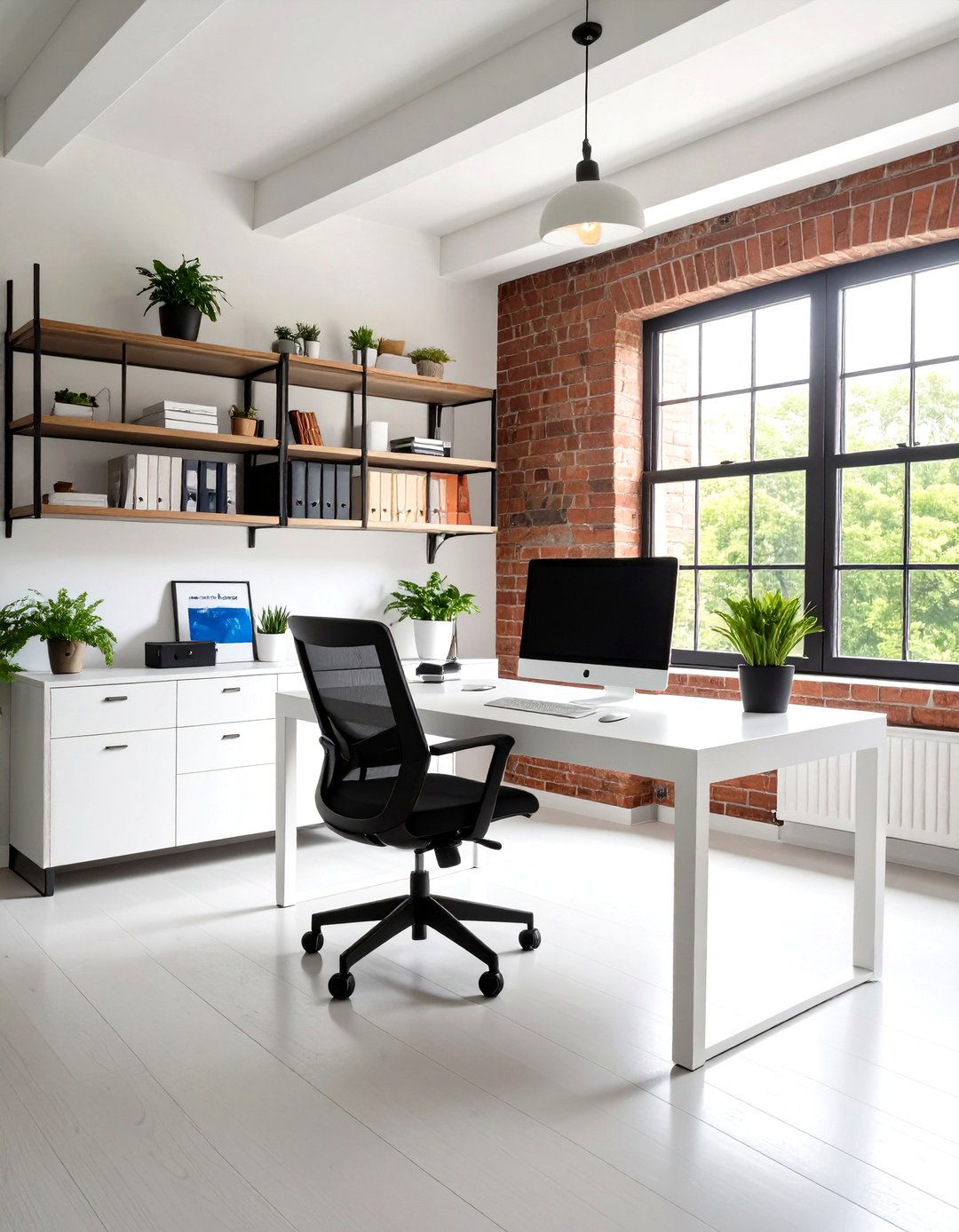
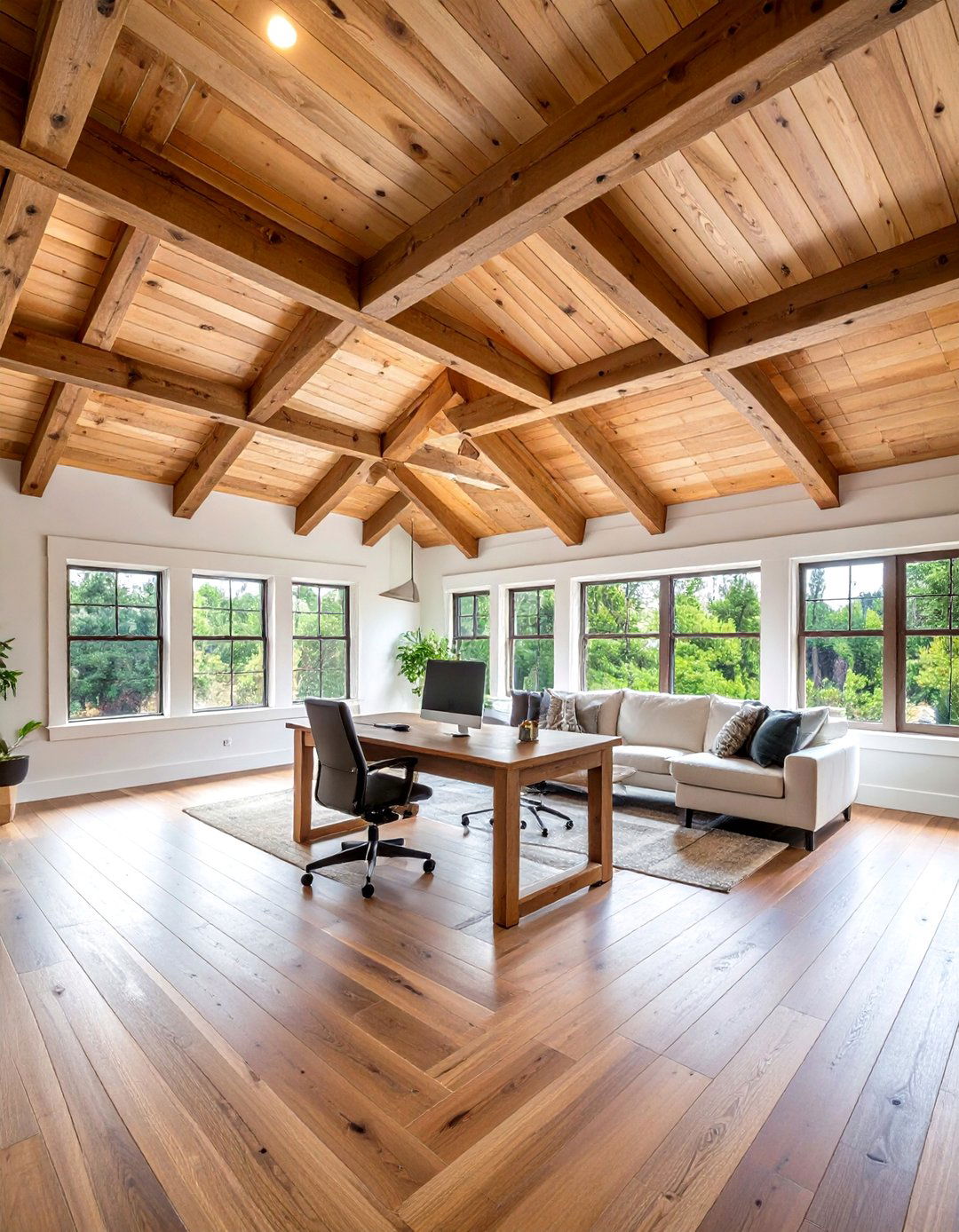


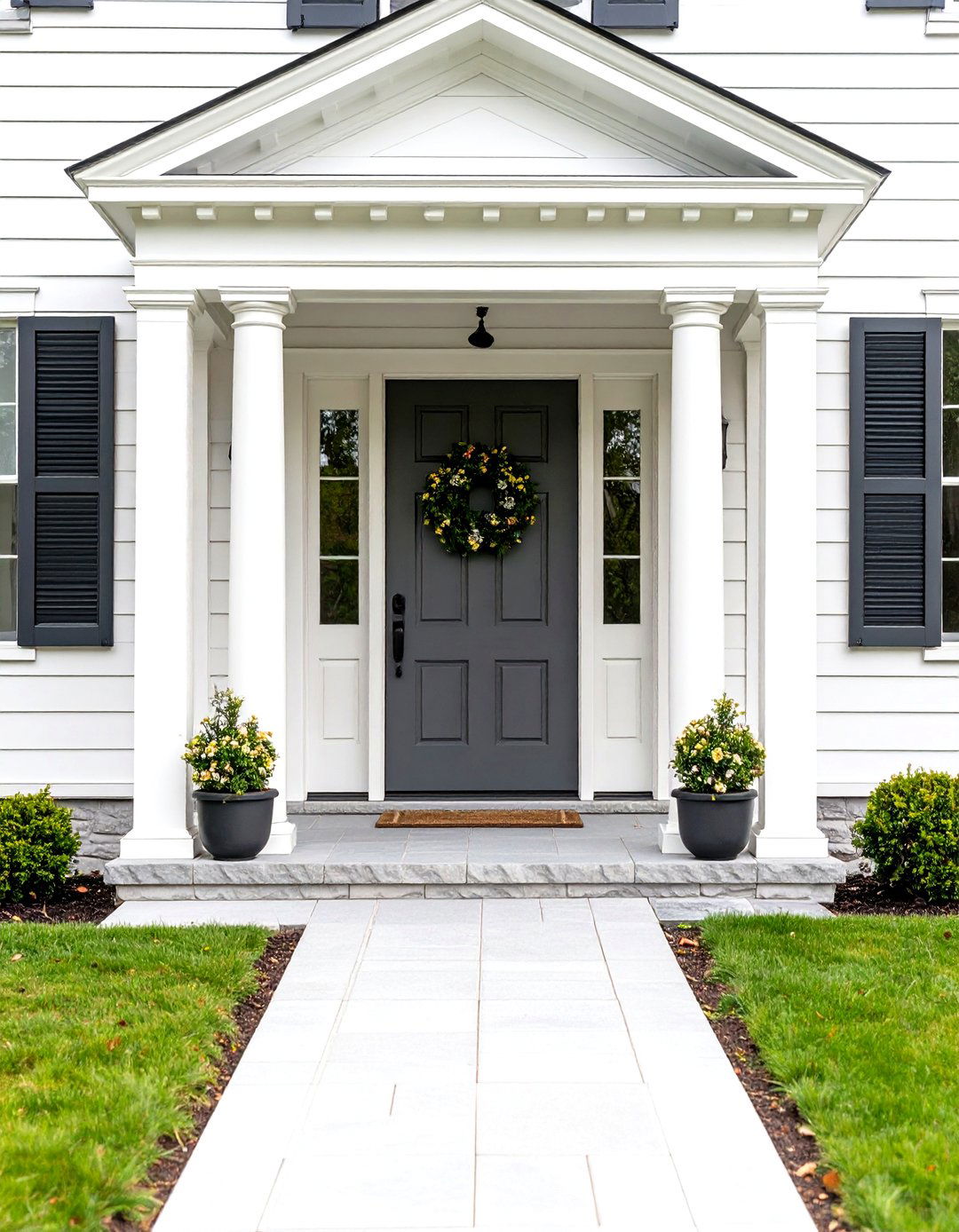
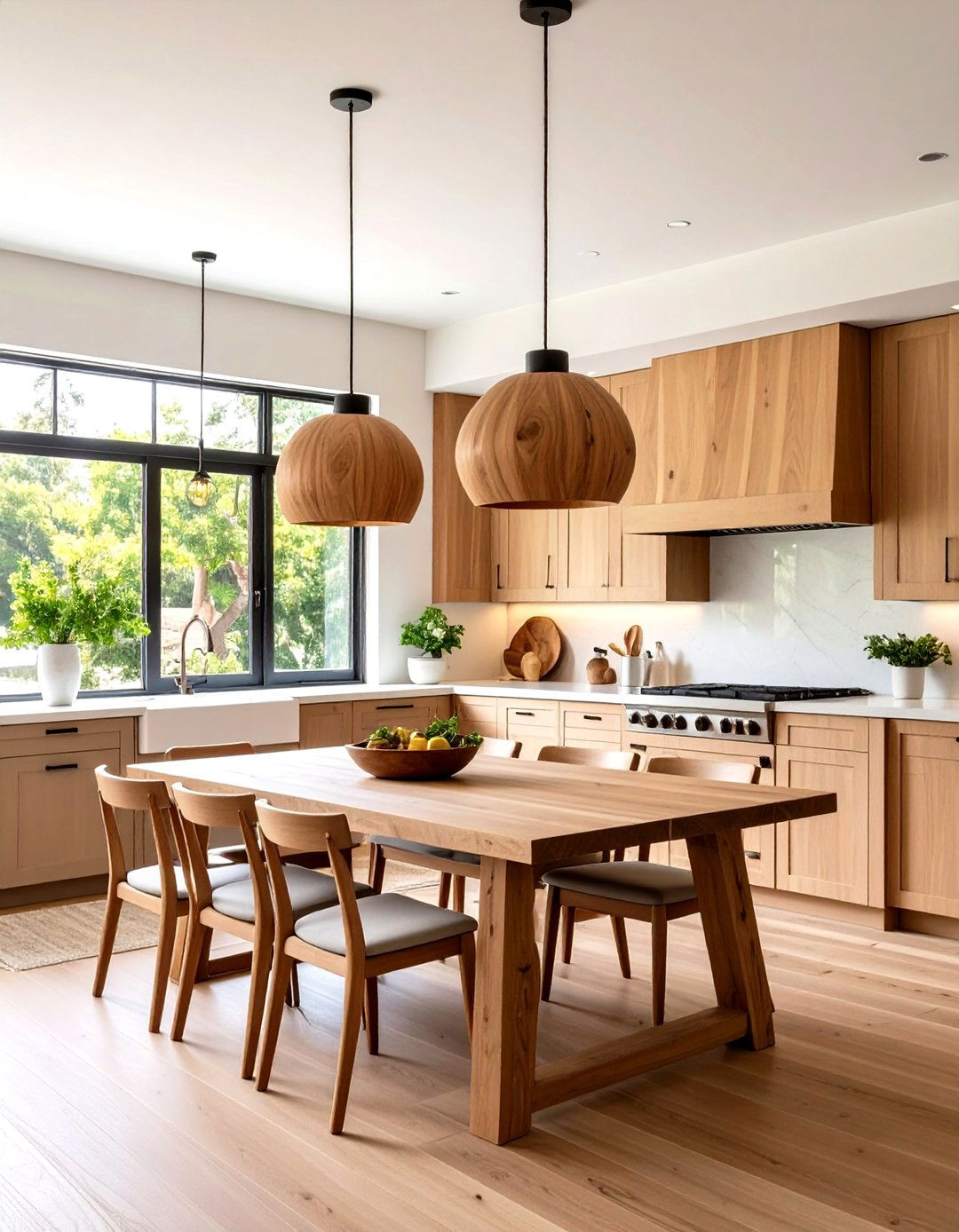
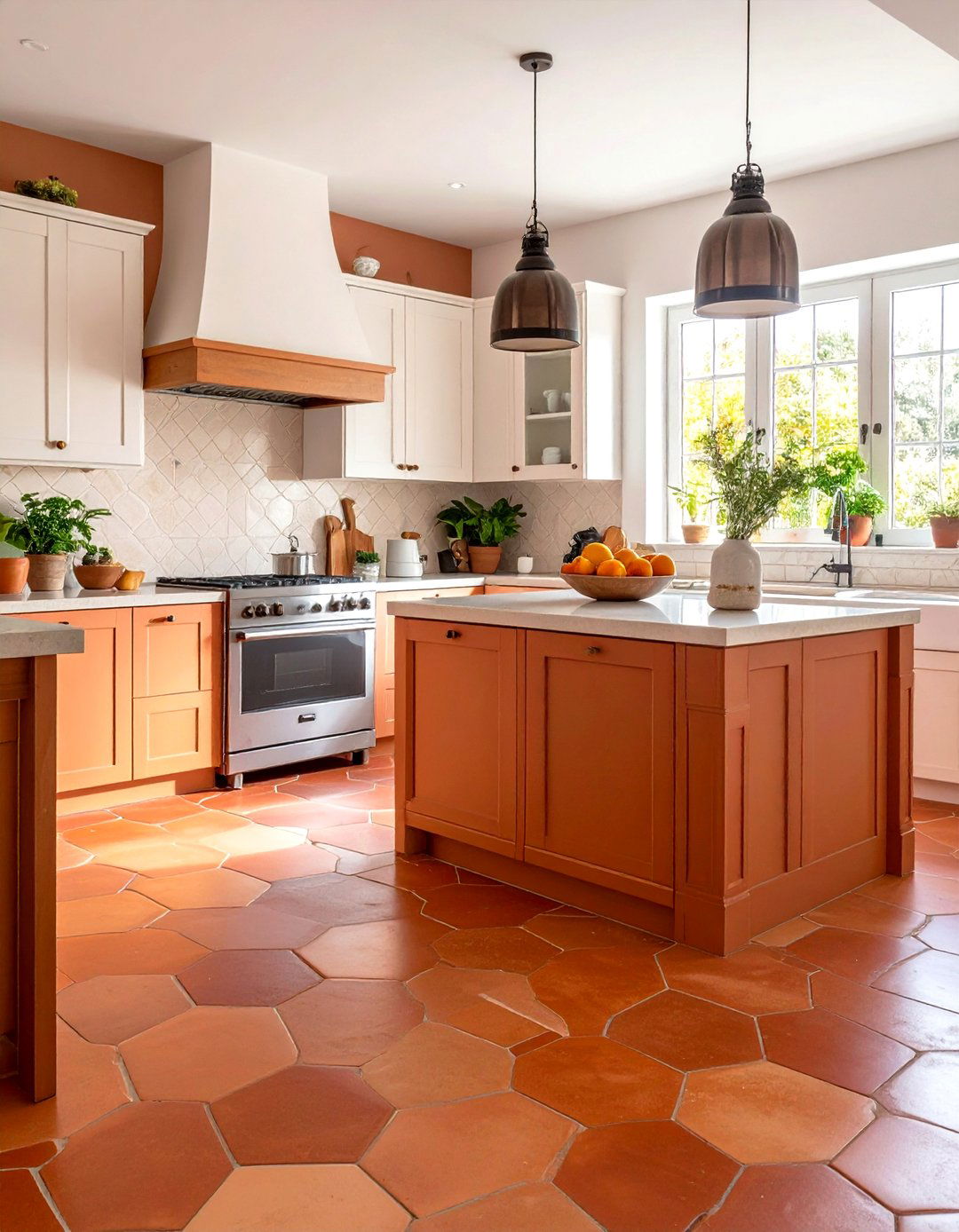
Leave a Reply